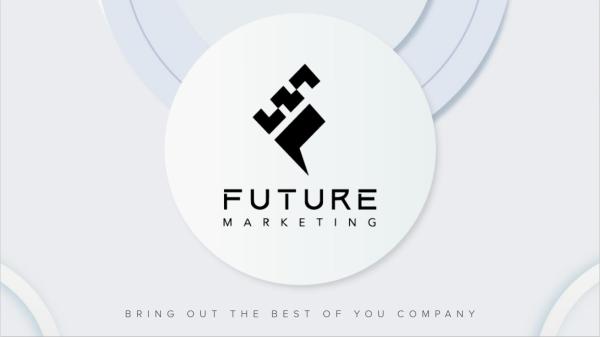You may also like:
Businesses of all sizes are adapting their marketing strategies as consumer behavior continues to evolve.
And new technology (like generative AI) may change how content is produced.
With that, here are the most important marketing trends over the next 24 months:
1. Generative AI changes how marketing is done
No new platform or technology is impacting the marketing space in 2024 more than generative AI.
In fact, marketers are already using AI tools to create content, brainstorm campaigns, and improve overall efficiency.
One study found that 73% of marketers already use AI tools on a regular basis.
AI is already a mainstay in many marketing departments in the US.
Notably, Google searches for “AI marketing tools” have increased by 967% over the past 24 months.
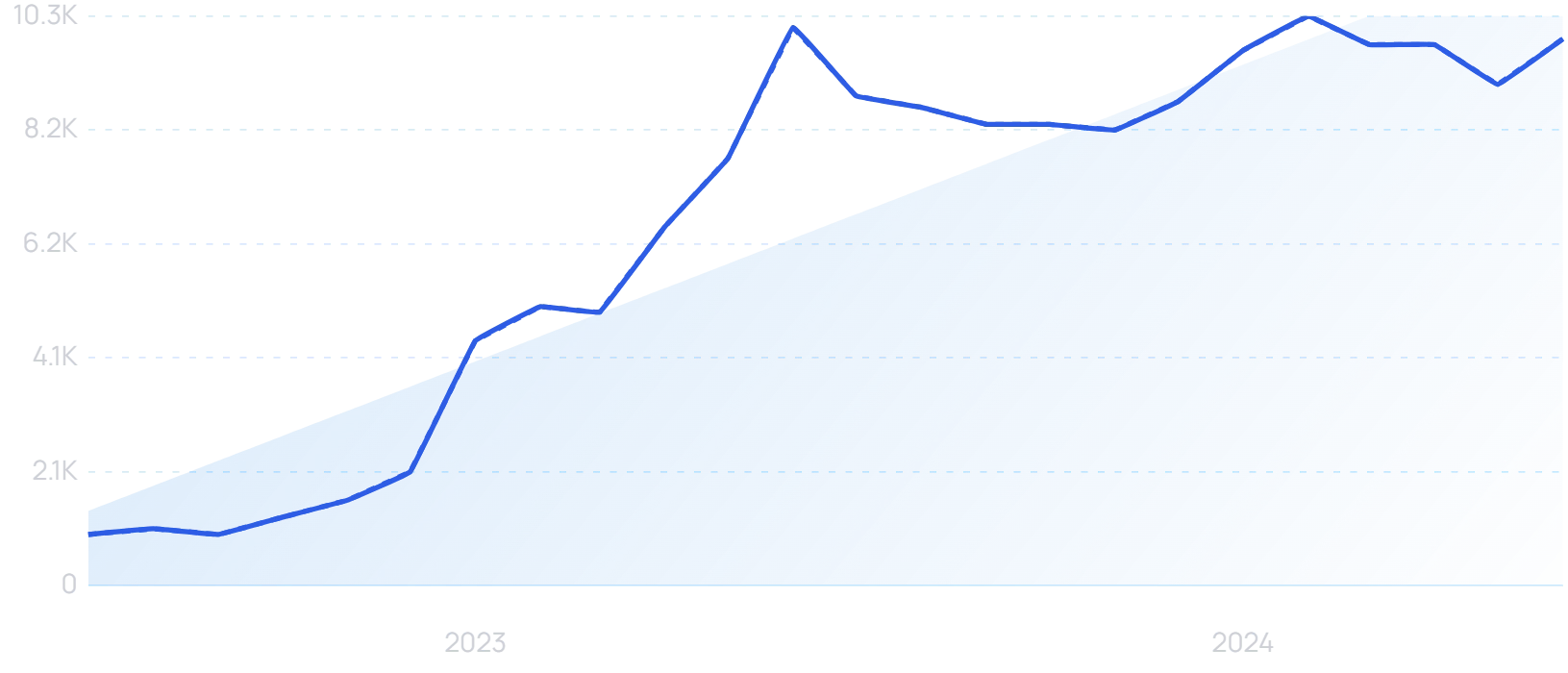
Search volume for “AI marketing tools” since late 2022.
Here are a few practical ways that AI is being used for marketing:
1. Ideation and brainstorming: ChatGPT and other LLMs can help come up with ideas for new campaigns, ad creatives and more.
2. Content creation: User-friendly platforms like Midjourney and DALL-E make it so any member of a marketing team can create ad copy or even social media images.
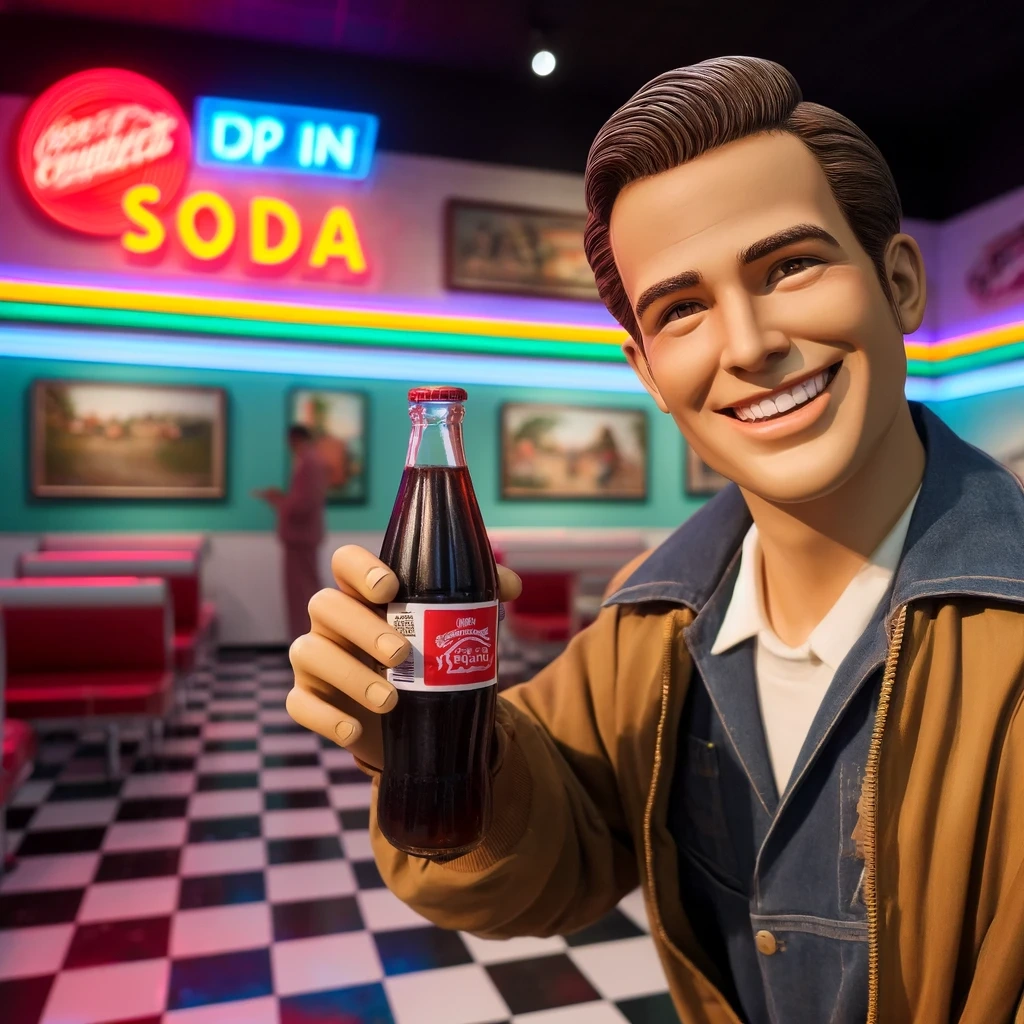
Example of a marketing image created with DALL-E.
3. Campaign analysis: Analyzing campaigns once tool days or weeks. Much of this work can now be done in minutes with generative AI. For example, marketers can upload a spreadsheet of an email campaign containing data like open rates, click-through rates and sales. And within minutes understand which messages and user segments performed the best.
4. Predictions and forecasting: With the right data, AI can help forecast future consumer interests and demand.
In 2025, expect AI usage to expand into new use cases (like automated A/B testing, AI influencers and campaign management).
2. Marketers go all-in on TikTok
Despite being a household name with over 1 billion users, TikTok is still seeing significant growth.
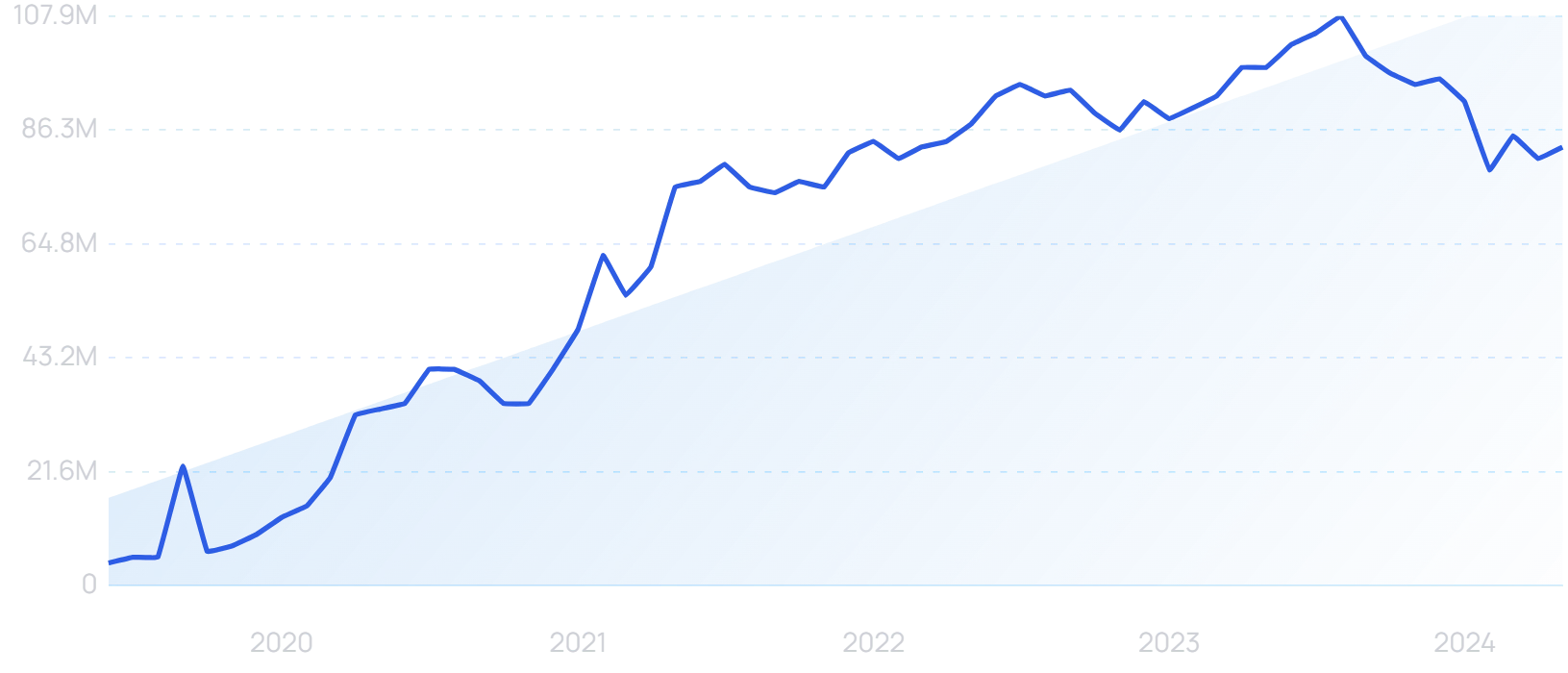
Searches for “TikTok” have increased by 1,825% in 5 years.
In fact, TikTok added over 200 million new users in Q4 last year alone.
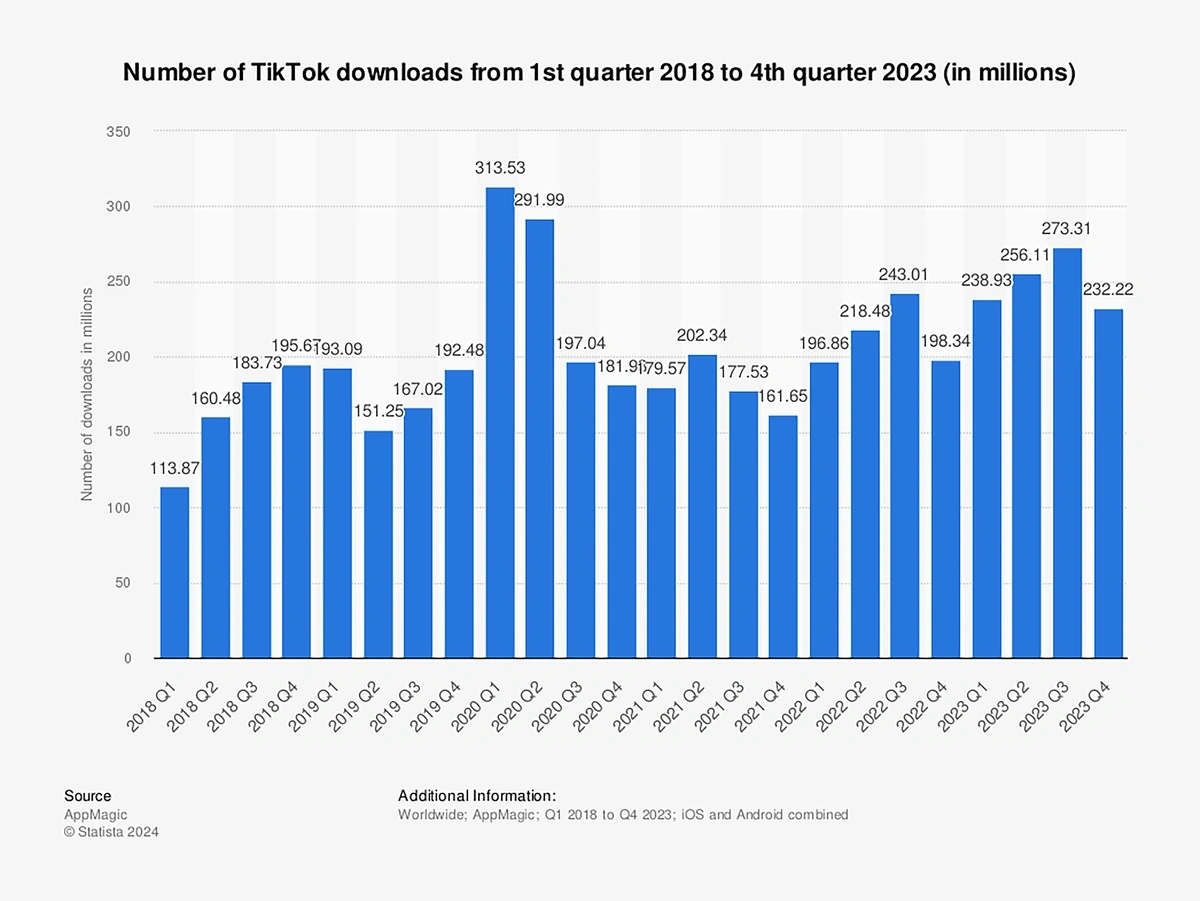
TikTok’s user base is still on the rise.
Many marketers see TikTok as a GenZ-only platform. Others are unsure of how to promote their brand with short-form video content.
In the coming months, expect more businesses do all-in with TikTok simply based on the sheer number of active users on the platform.
TikTok also boasts incredibly high user engagement levels.
Recent developments show that TikTok is putting focus on businesses and their marketing needs.
For example, TikTok’s ad platform now directly competes with giants like Google and Meta.

Searches for “TikTok ads” have increased by 8,100% in 5 years.
Like with major ad players, TikTok now allows dozens of ad targeting “dimensions”, including:
- Age
- Gender
- Location
- Interests
- Purchase intent
And we’re starting to see nationwide brands to add TikTok to their marketing mix.
For example, Petco ran a large-scale UGC campaign on TikTok that reached 67 million people.
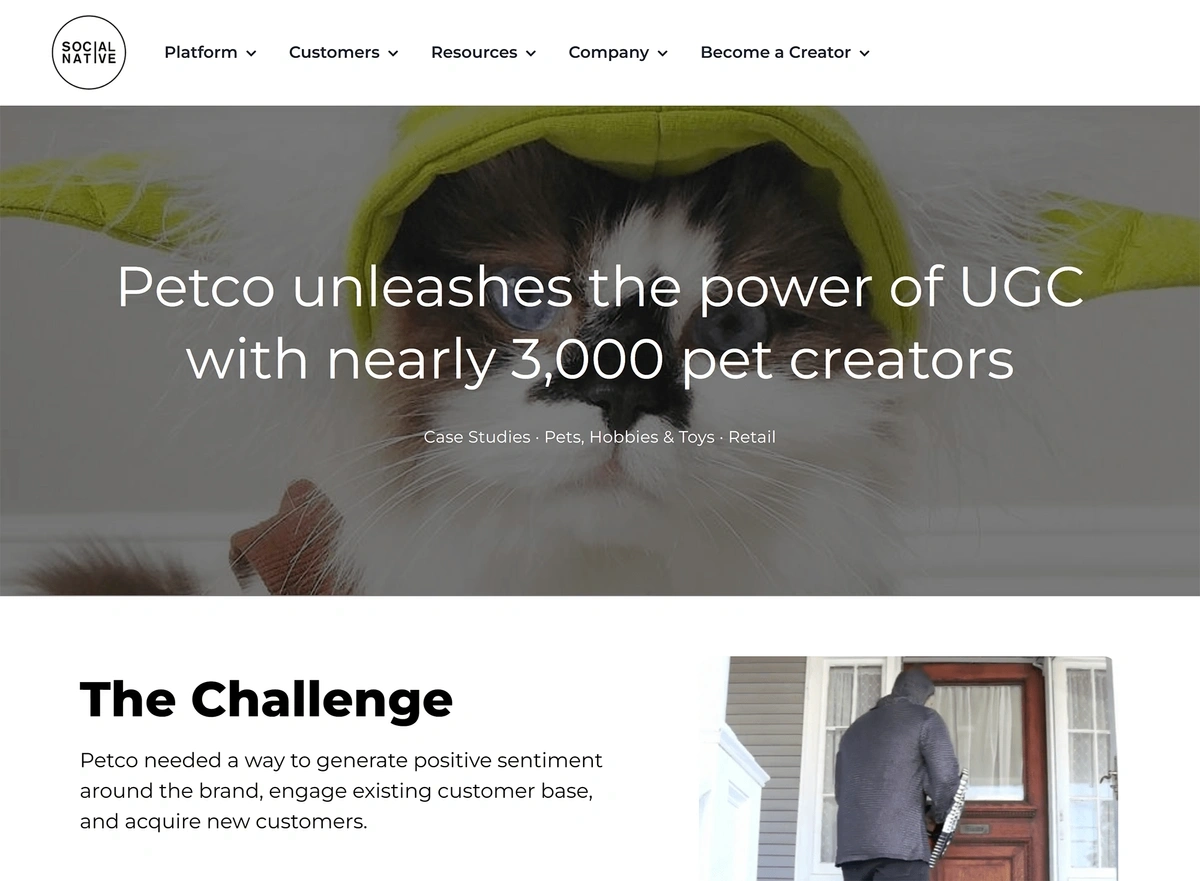
Example of a large brand using TikTok ads.
3. AI helps with personalized marketing campaigns

Searches for “personalized marketing” have doubled over the last 5 years.
More and more companies are using data to create deeper personalized interactions between their brand and their audience.
In fact, 80% of consumers are more likely to purchase if there’s personalization involved in the customer experience.
More than 36% of consumers say they want a more personalized shopping experience, but “data debt” is a problem.
And it seems that consumers are not suffering from a lack of trust.
One report showed that 90% of shoppers are willing to share data about themselves if it means they’ll get a cheaper or easier shopping experience.
One example of personalization: Crate and Barrel offers a “view in my room” feature on their website.
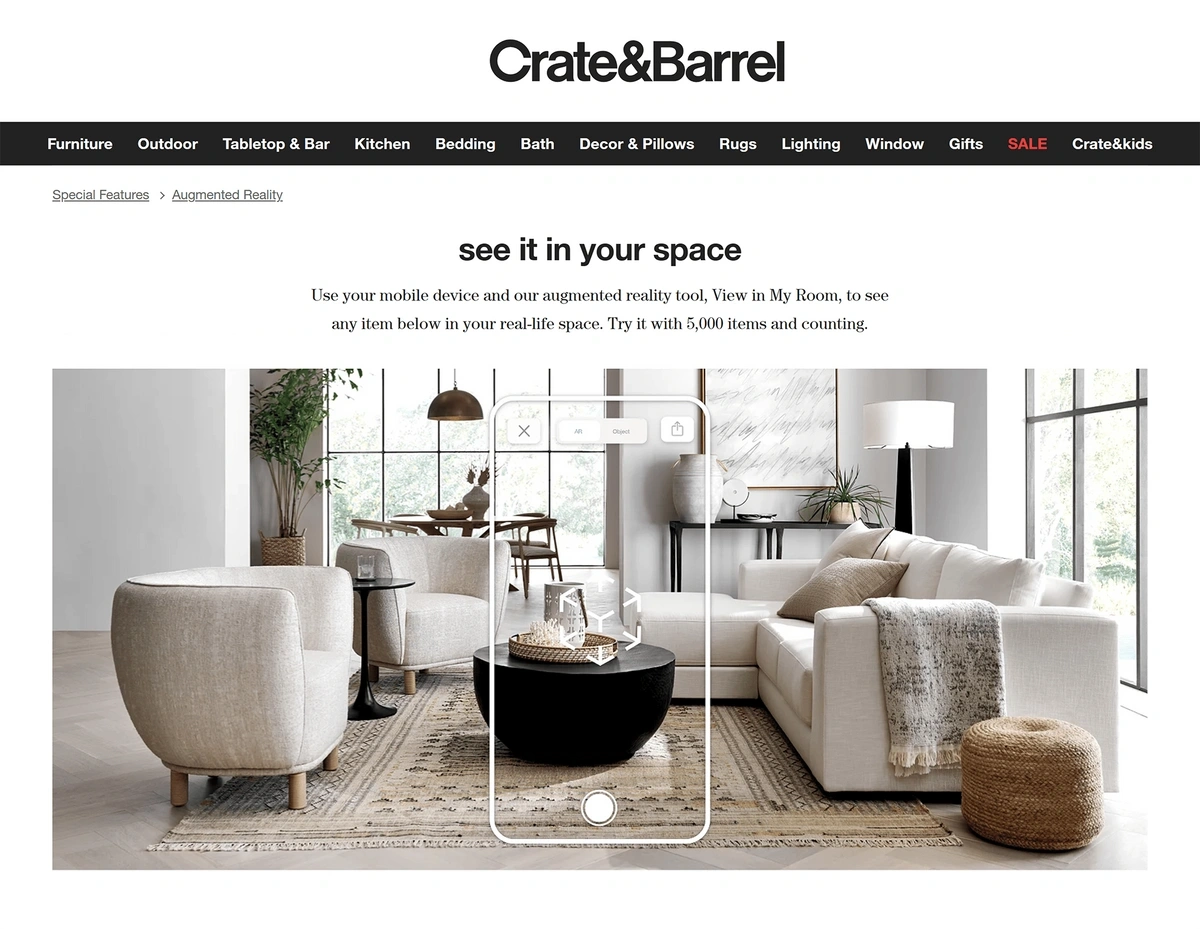
View my room uses basic AR technology to simulate how furniture would look in a customer’s room.
Thanks to augmented reality, consumers can scan a QR code to see a piece of furniture come to life in their very own home.
Netflix is constantly pushing the limits of personalization.
The company’s “recommended” algorithm is so accurate that 80% of viewing choices come from their recommendations with only the remaining 20% of viewings coming from a subscriber’s search.
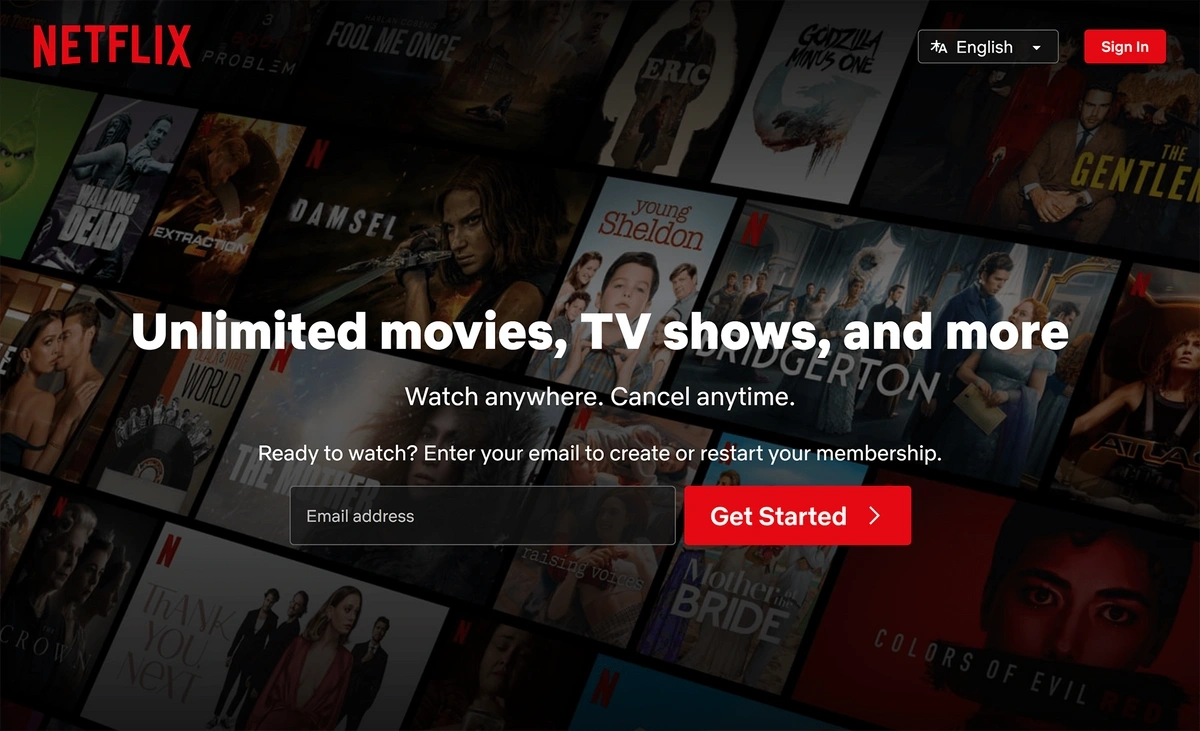
Netflix is one of many companies combining artificial intelligence and big data to provide highly personalized recommendations.
While there are multiple ways to personalize digital marketing efforts, only 10% of businesses use any personalization strategies beyond that.
McKinsey, a global consulting firm, predicts that “offline person-to-person experiences will be the next horizon for personalization”.
They suggest that advanced analytics and AI-enabled tools will drive the change.
Even though the full impact of AI-driven personalization is yet to be seen, companies that are using the marketing strategy are seeing a huge impact.
The Rise of Personalized Commerce study showed that 70% of businesses that used AI personalization reported seeing a 200% ROI from it.
4. E-commerce drives news features on Instagram
The inventor of the hashtag, Chris Messina, was recently quoted: “Instagram is set on colonizing the bleeding edge of where commerce is going”.
The platform has released several new e-commerce features, and the app continues to attract a massive audience – a win-win for marketing professionals in 2024 and beyond.
As of June 2024, Instagram has more than 2 billion active users.
Those millions of users are on Instagram for more than just sharing photos with their friends.
In fact, one large study showed that 36% of users follow brands and companies on the app.
Instagram itself reports that more than 200 million users visit at least one business profile daily.
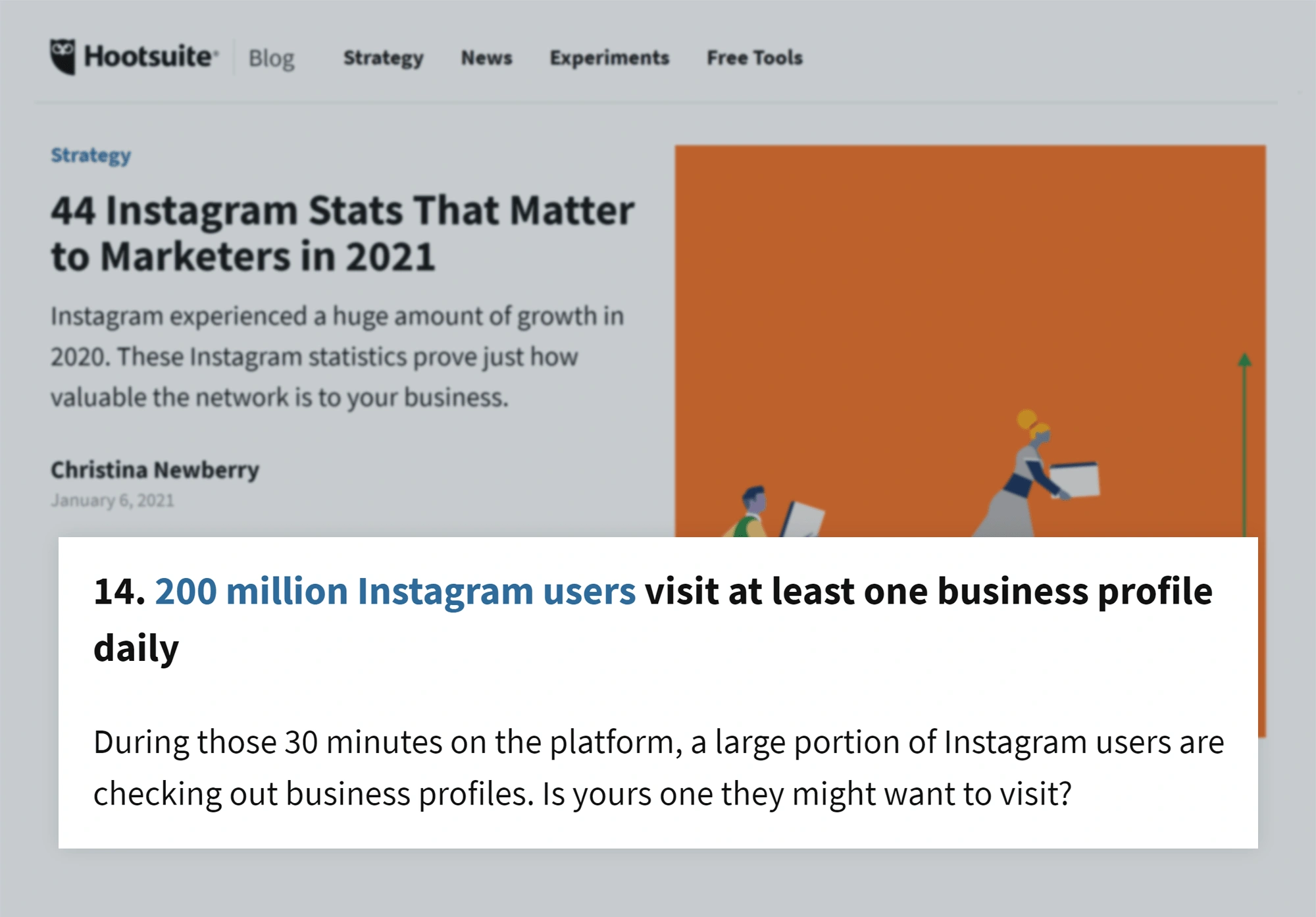
Instagram’s internal data shows that users regularly interact with businesses on the platform.
In many ways, Instagram has become a one-stop shop for digital marketing.
Businesses can gain followers, build their brands, and sell their products right on the app.
As one marketing agency puts it, “[Instagram keeps] making it easier for brands to attract new audiences and move existing consumers down the sales funnel, all within one platform”.
This path to purchasing comes into play in several different ways, making it easier than ever for marketers to convert followers into sales.
Users can shop on Instagram’s reels, live broadcasts, posts, and stories, and through a store link in a business’ bio.
Of course, most marketers take advantage of Instagram ads, too.
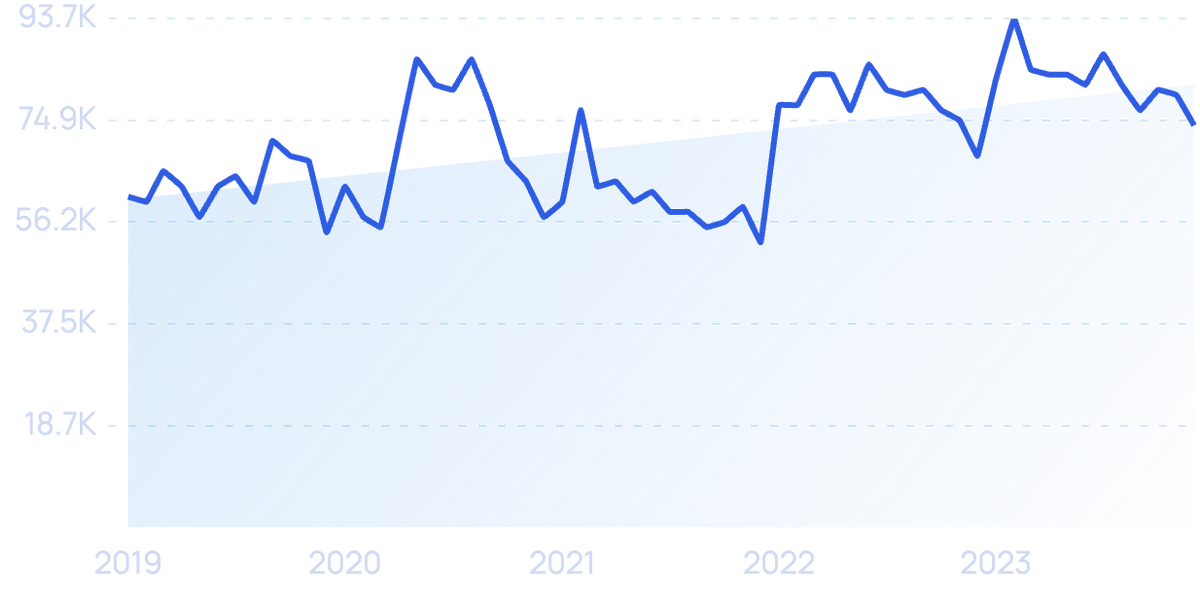
Google searches for “Instagram ads” have increased by 22% in 5 years.
One survey showed that 29% of businesses spend the majority of their social ads budget on Instagram.
More than 20% of the respondents also said they see the best ROAS on Instagram.
Projections show that US businesses were expected to spend a total of $9.1 billion on Instagram ads by the end of 2024.
5. Influencer marketing matures
Influencer marketing is no longer “the next big thing” in the marketing space.
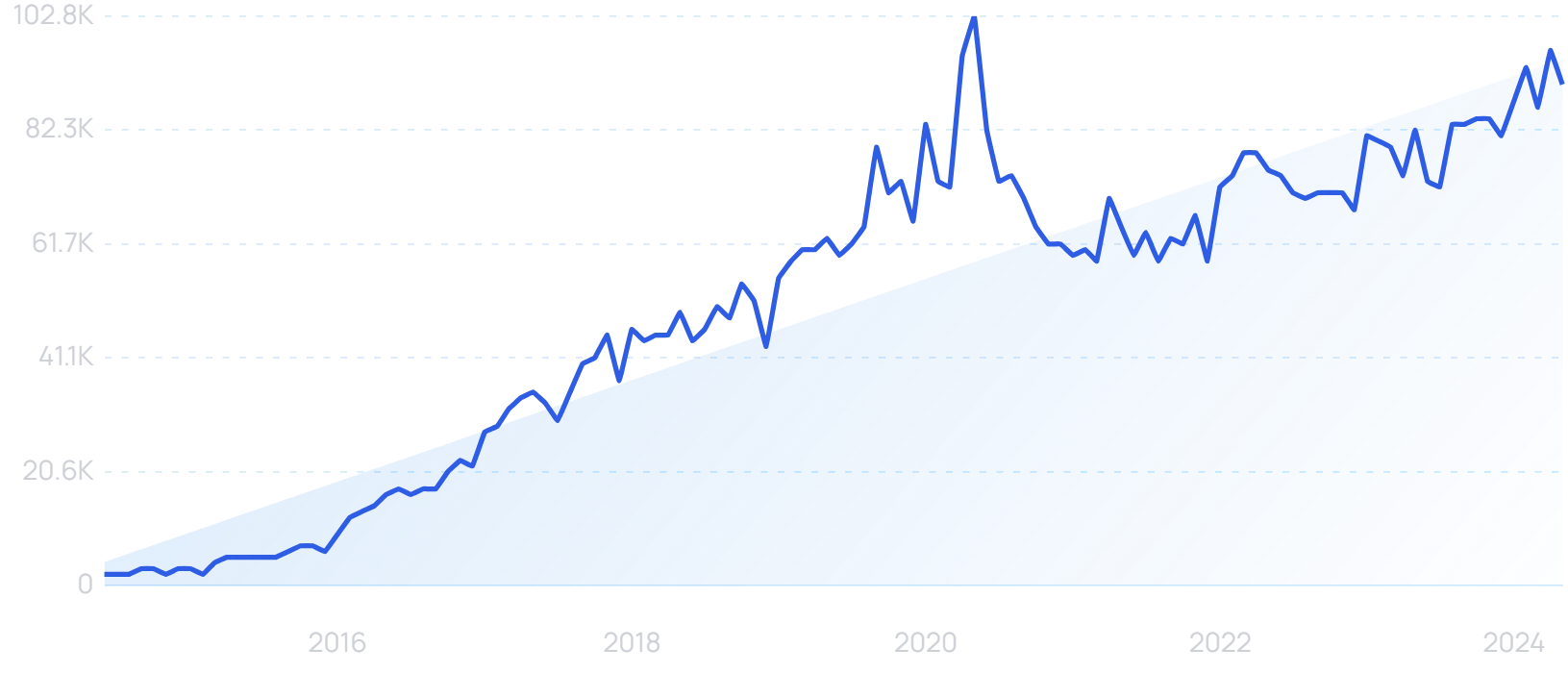
Despite a recent drop-off in searches for “influencer marketing”, the search term has still grown over the past decade.
In fact, influencer marketing is now a mainstay channel for small and large brands.
(Especially in B2C)
In fact, influencer marketing spend is expected to reach $35 billion by the end of this year.
For many businesses, the strong ROI makes influencer marketing a smart choice.
In one survey, 48% of marketers said that influencer marketing has a better or much better ROI than other marketing channels.
Another survey reported that, on average, influencer marketing provides $5.20 of value for every dollar spent.
Big businesses have seen recent success with mega-influencers.
For example, Dunkin’s partnership with TikTok influencer Charli D’Amelio reportedly resulted in a 20% increase in cold brew sales and a 57% increase in downloads of the Dunkin’ app.
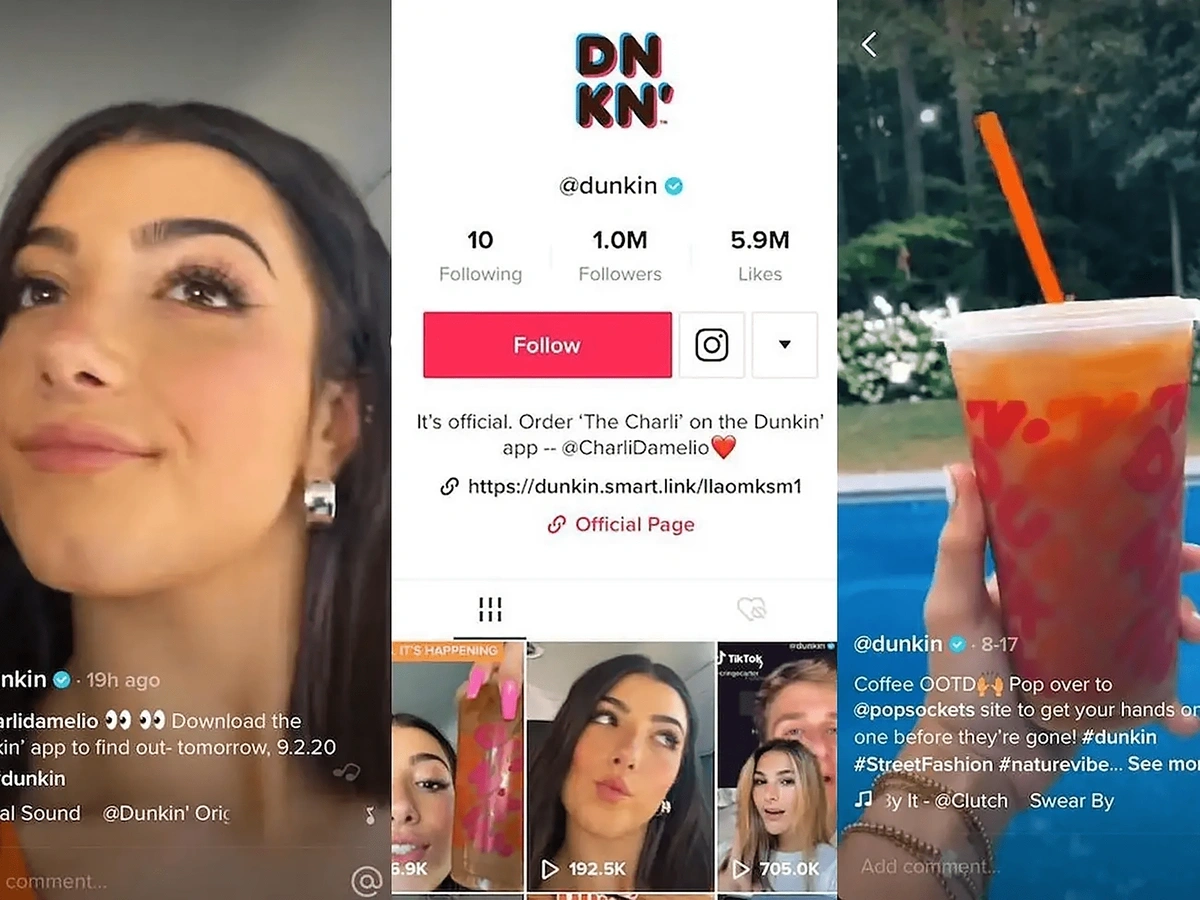
Dunkin’s campaign with Charli D’Ameli led to significant real world results for the brand.
Dunkin’ partnered with several micro-influencers, showing that companies using this marketing strategy are using different influencers for different purposes.
Overall, the campaign reached more than 1 million people on Instagram and boasted a 5.2% engagement rate.
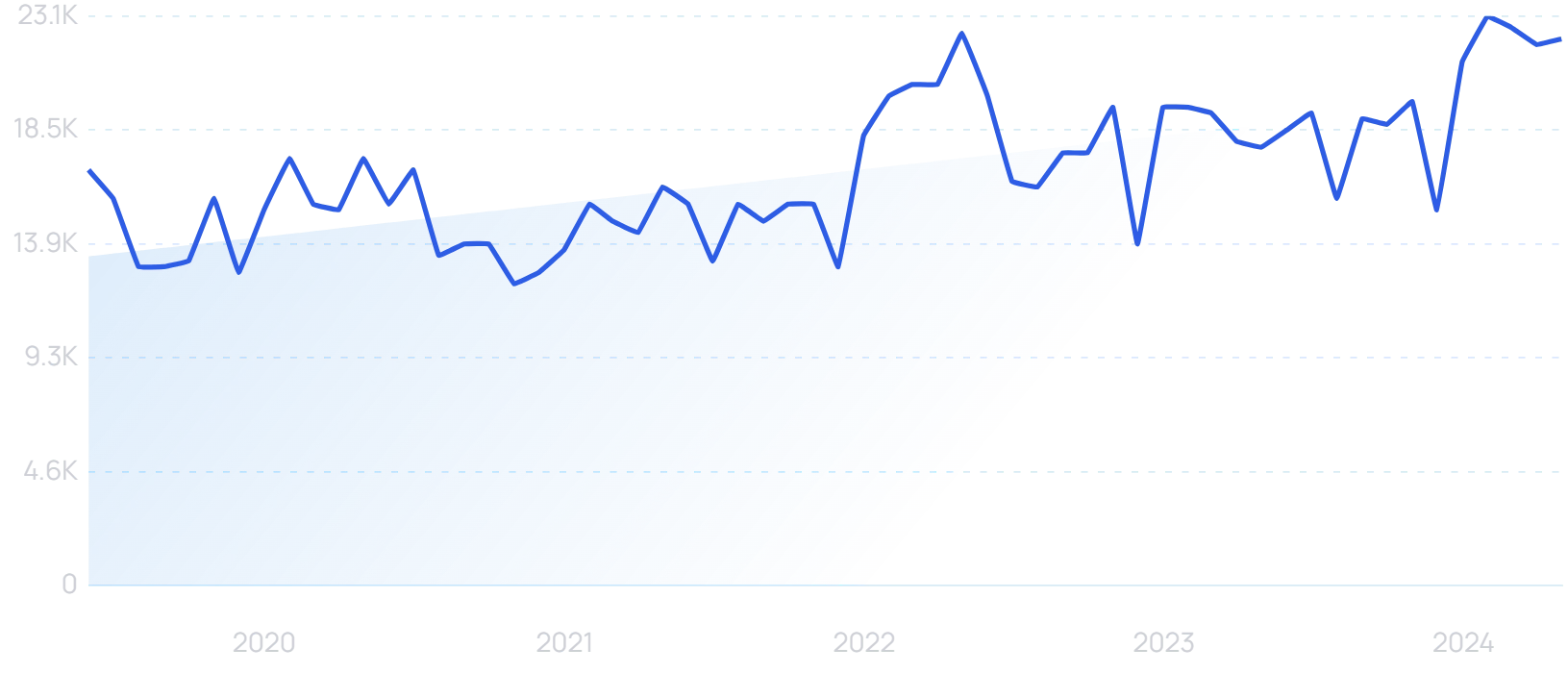
Searches for “micro influencers” has been rising steadily.
6. Advertisers prioritize user-generated content
One important trend that accompanies the drive for authenticity on social media is the rise of user-generated content (UGC).
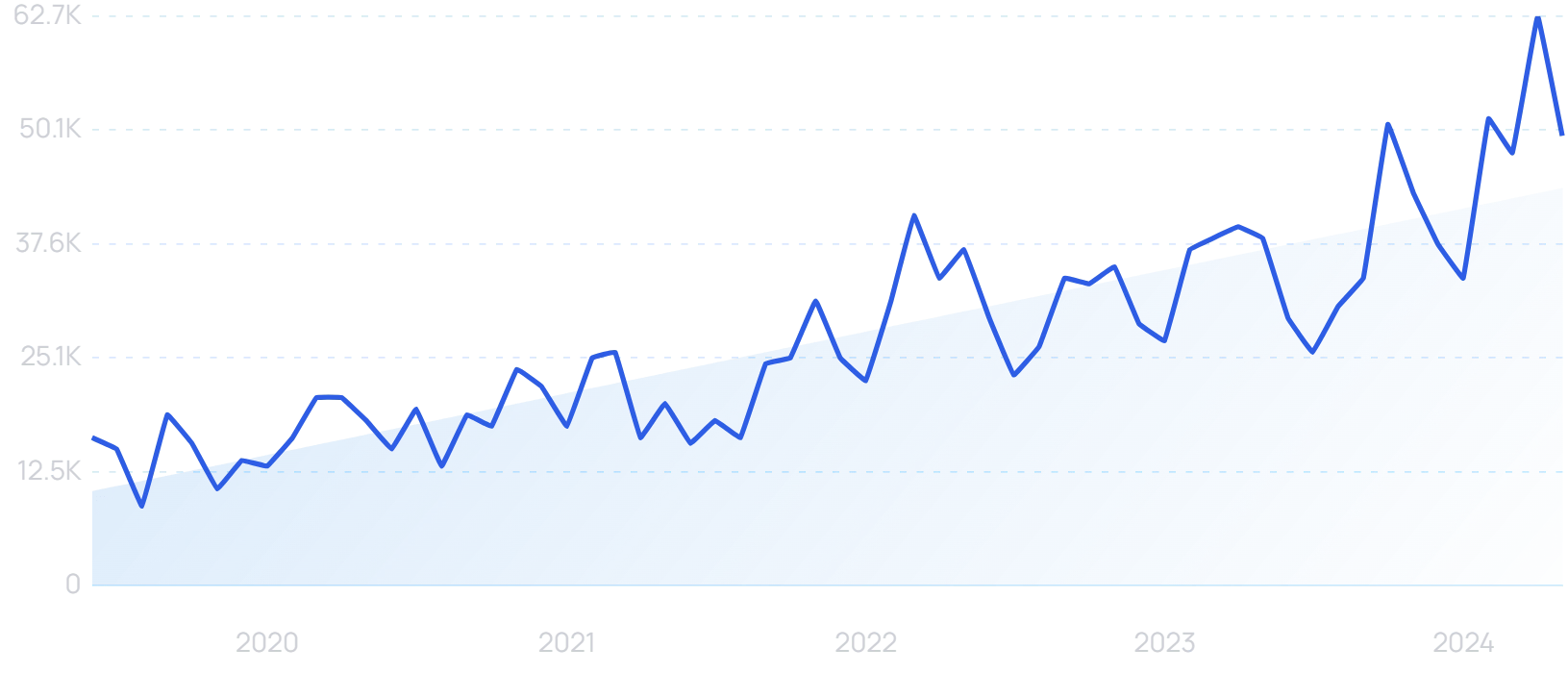
Search engine interest for “user generated content” has doubled over the past 5 years.
The American Association of Advertising Agencies reports that 96% of consumers don’t trust ads.
But, a recent study found that 93% of marketers agree that consumers do trust content created by real people.
For example, Vitamix runs a “smoothie of the year” campaign that features smoothies made with the product.
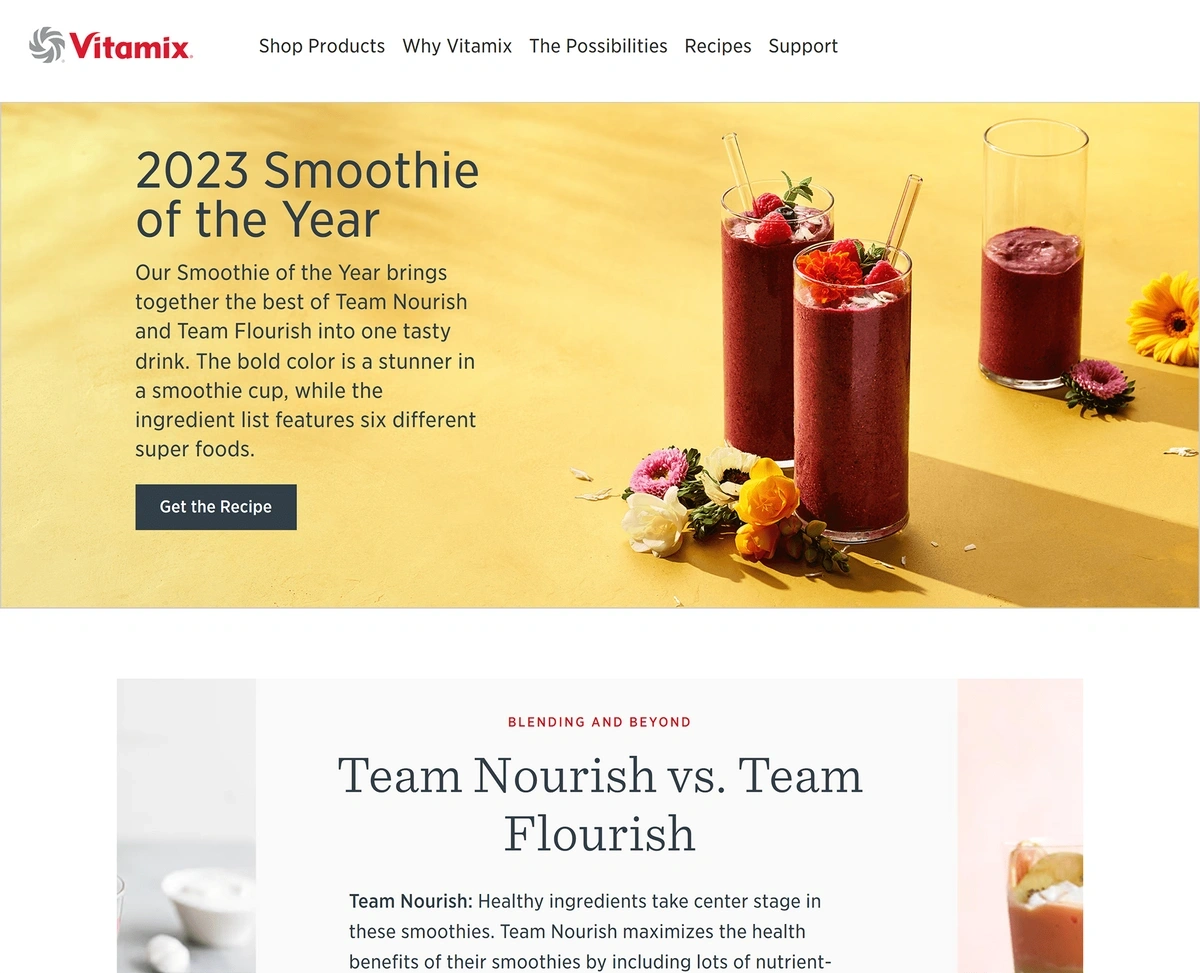
Vitamix is one of many major brands focused on UGC.
Brands can also use UGC to promote social causes and increase engagement among their social followers.
Clothing company Aerie started the #aeriereal hashtag, encouraging their customers to post unfiltered images of themselves on Instagram.
7. Marketers go all-in with video
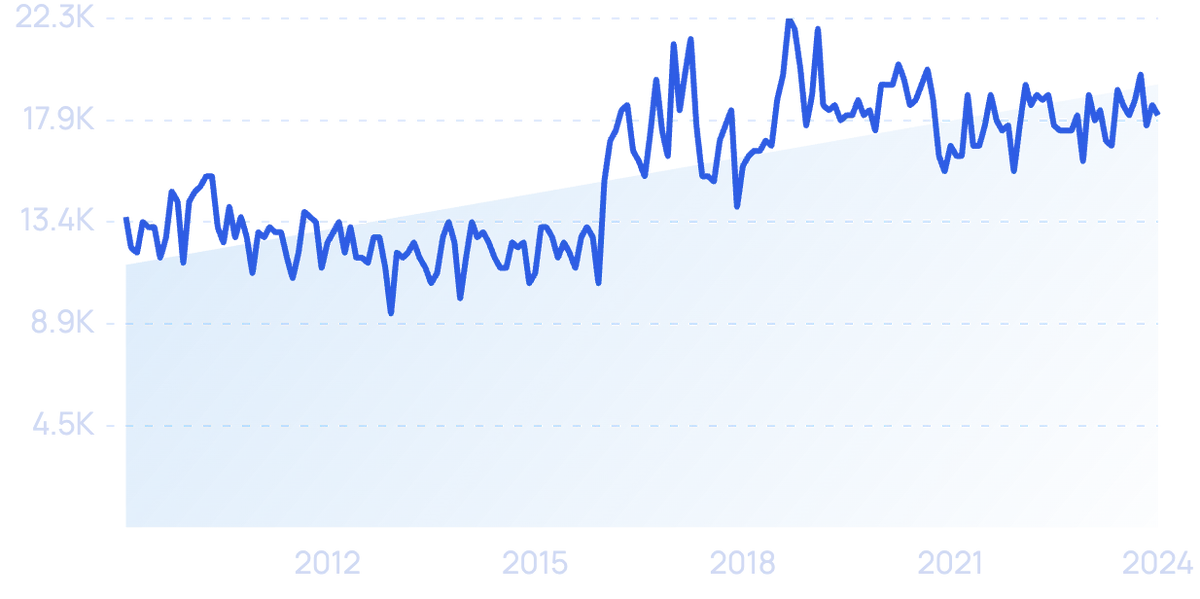
Search growth for the term “video marketing” over the last decade.
HubSpot has named video marketing as “one of, if not the, most important marketing trend today and likely for the next 5-10 years”.
To see the dominance of video, you don’t need to look any further than YouTube.
The platform reports that more than 500 hours of content are uploaded every minute.
However, YouTube is now one of many video-first social media platforms.
Instagram, TikTok and even X (formerly Twitter) are becoming video-first platforms.
And marketers are starting to take notice by making video the focus of their campaigns.
Wyzowl reports that, in 2024, 91% of businesses now use video as a marketing tool.
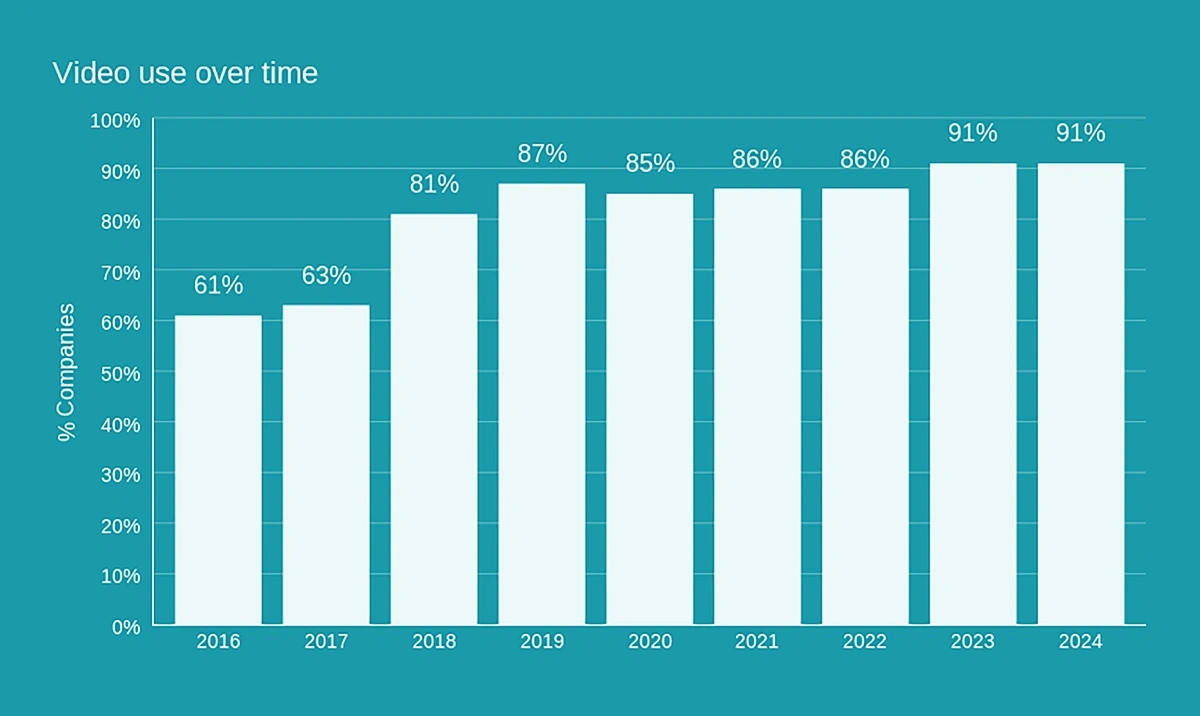
According to one industry study, nearly every business now invests in video content.
The stats regarding video content on social media are especially convincing.
For example, Instagram Reels significantly outperform other content types on the platform.
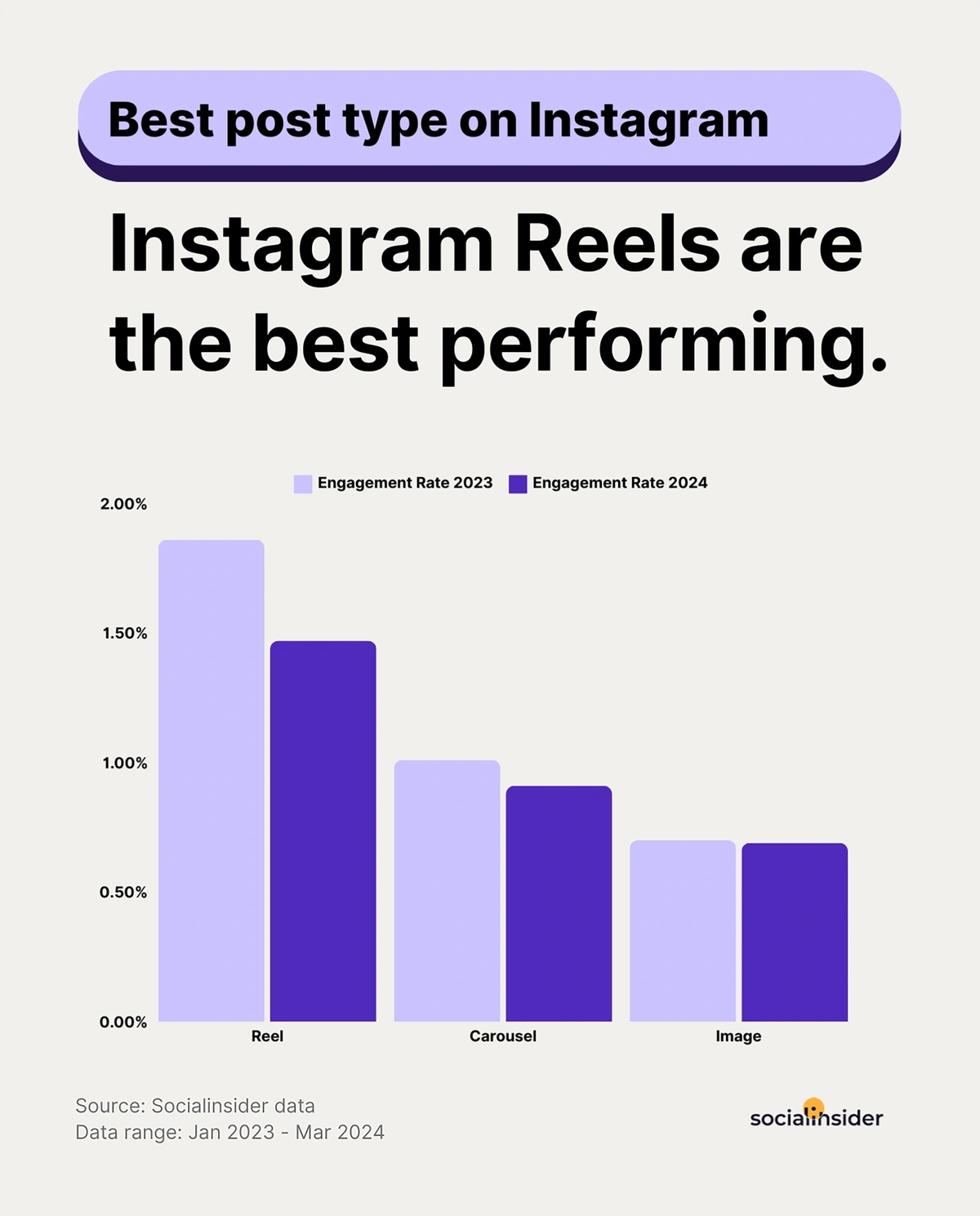
When it comes to user engagement, Reels get more engagement than non-video posts.
There is a sweet spot in video marketing, though.
Data shows that short videos are the most popular, and the definition of “short” gets shorter and shorter every year.
(Largely thanks to TikTok and YouTube Shorts).
Today’s industry rule is that marketing videos should be no longer than 2 minutes.
8. Consumer demand fuels visual search
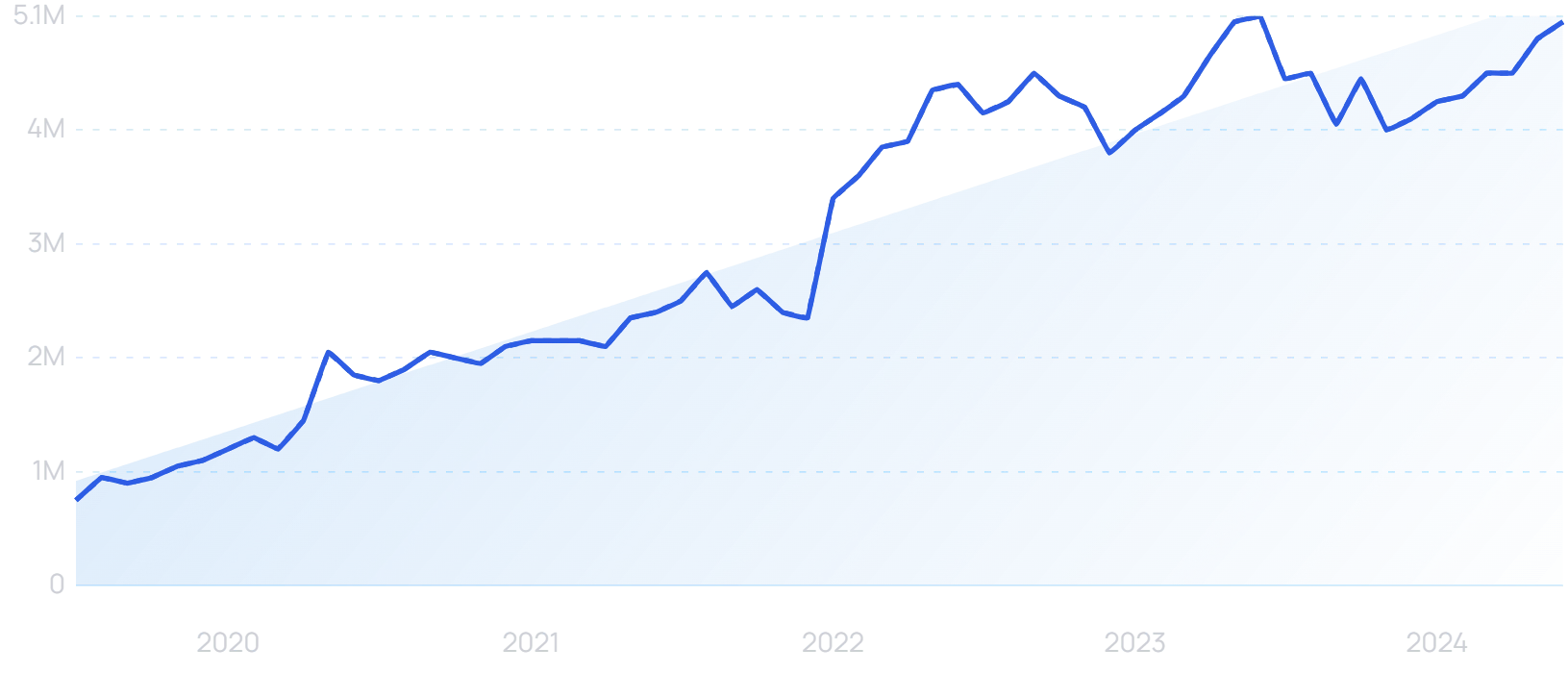
Search interest in “Google lens” has been on a steady climb.
Thanks to AI, visual search is finally here.
Right now, incorporating visual search into marketing strategies is an emerging marketing trend.
It’s something that advertisers have focused on, but an article from London-based publisher Raconteur stated that only 8 percent of specialty retail brands have integrated a photo search capability into their apps.
The image recognition market is expected to grow to $53 billion by 2025.
And a study reported that 35% of marketers were planning to optimize visual search in the near future.
There is plenty of demand for visual search among consumers.
One report showed that 74% of consumers say text-based searches are “inefficient” for their needs.
Millennials, especially, want visual search capabilities – 62% want to use it more than any other new technology.
Google Lens is one of the most popular visual search apps available.
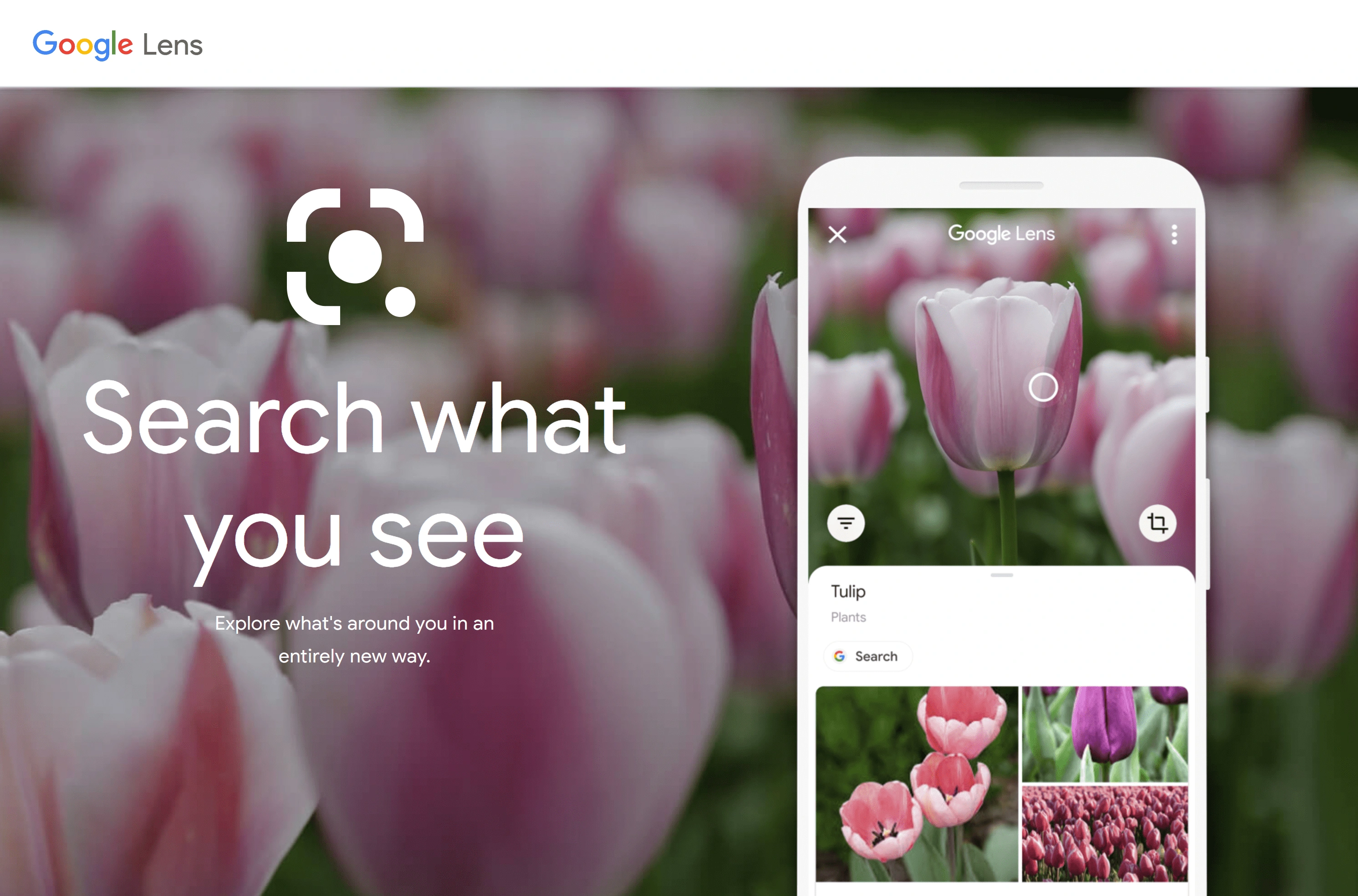
Google Lens is steadily growing.
Pinterest Lens might be even more impressive.
It can recognize more than 2.5 billion objects.
Their platform can take consumers directly from visual search to purchasing.
Two other examples of the trend: Amazon has StyleSnap, which uses visual search and several other parameters to recommend items to consumers.
And, Snapchat’s visual search goes as far as to recognize food packaging and wine labels.
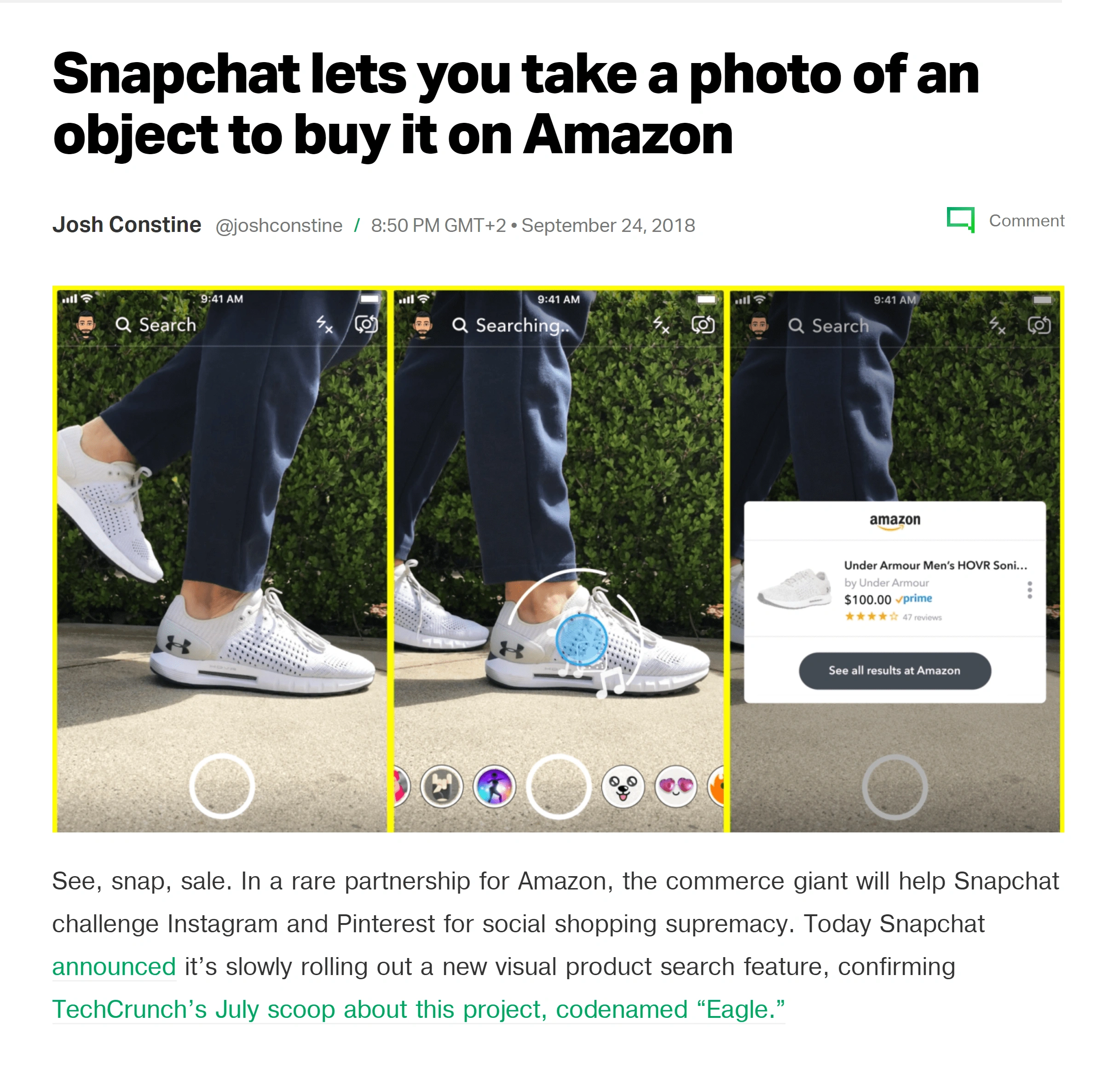
Snapchat’s visual search feature.
Visual search marketing is especially prevalent in the fashion and furniture industries.
ASOS’s app allows users to take a photo and the platform will automatically find the product or recommend a different product that matches the style of the item in the image.
Visual search doesn’t stop there – it’s also being used by NAPA Auto Parts stores.
Their “Drop & Find” kiosk captures an image of a part, matches it to one in its AI system, and provides instant information on where a customer can find that exact part in the store. The system recognizes 5,000 parts and finds the customer an exact match 90% of the time.
And just this year, OpenAI’s GPT-4o model was specially engineered with robust vision capabilities as a core use case.
9. Marketers Turn to YouTube Ads for Increased Reach and Improved ROI
As consumers shy away from watching traditional television, companies are spending their ad budgets elsewhere.
YouTube is quickly becoming an advertising giant.
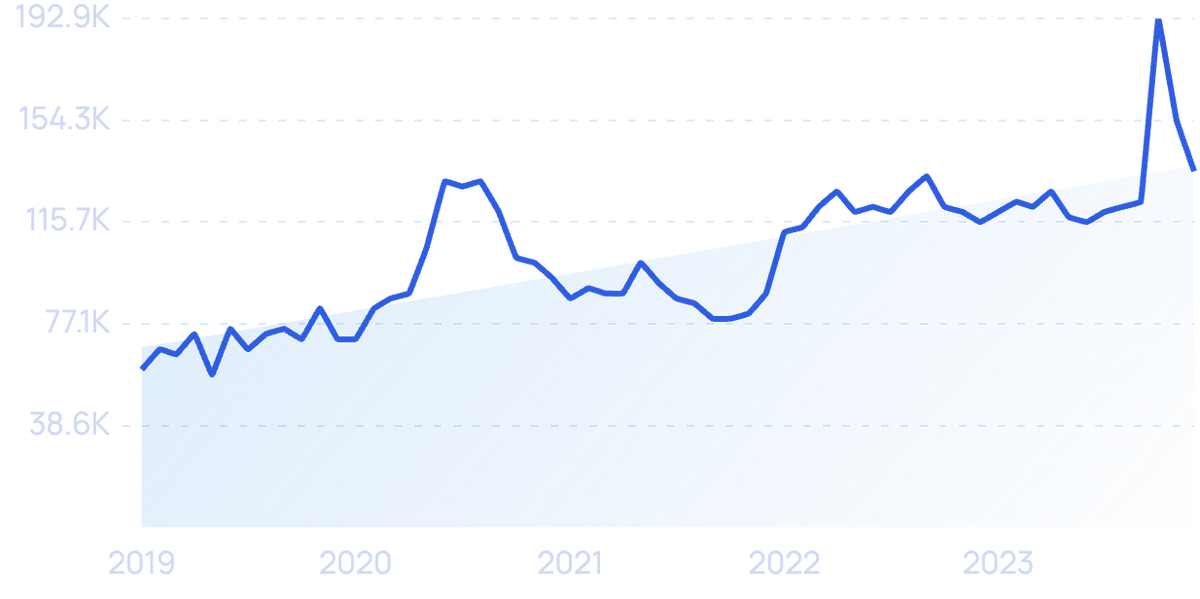
Search volume for “youtube ads” has grown 126% over the past 5 years.
The platform’s global revenue is up to over $8 billion per quarter.
The Social Media Examiner reports that 52% of marketers are currently using YouTube and more than half of marketers want to learn more about YouTube ads.
Digital marketers who use YouTube ads have the potential to reach 1.7 billion unique visitors every month.
These ads are also relatively cheap, too — $.03 to $.30 per impression.
Grammarly, a cloud-based typing assistant with 30 million users, utilized YouTube’s full-funnel ad strategy with a dual focus on long-term brand building and new customer acquisition.
The result was a 9% higher ROI compared to awareness advertising alone and a 13% increase in conversions with the same ad budget.
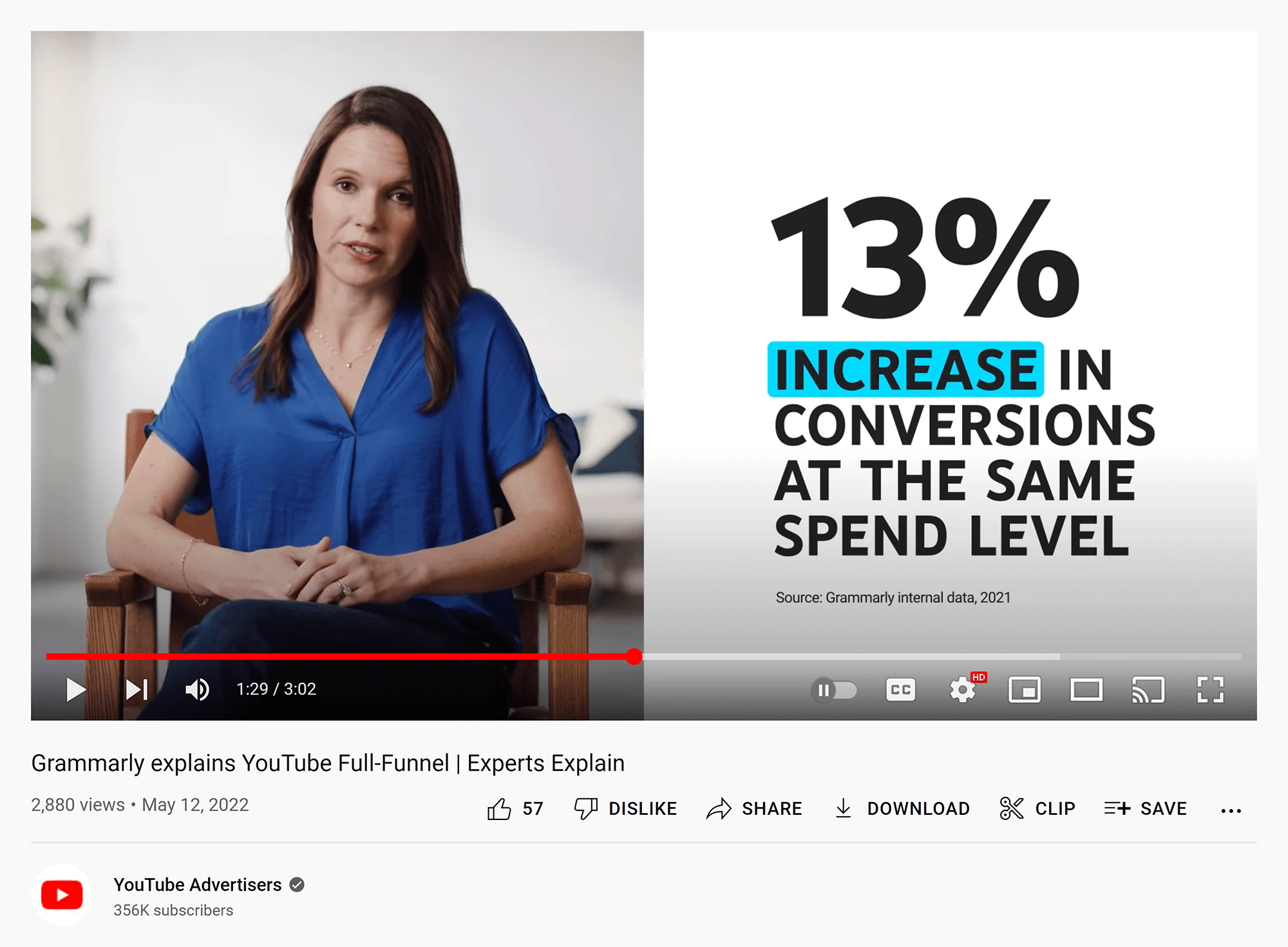
Grammarly saw an improved conversion rate when running YouTube ads in 2021.
Digital marketers at Kayak, a popular travel booking site, launched a series of humorous ads on YouTube. The goal was to inspire people to get back to traveling after the pandemic. The ads aired on YouTube’s connected TV.
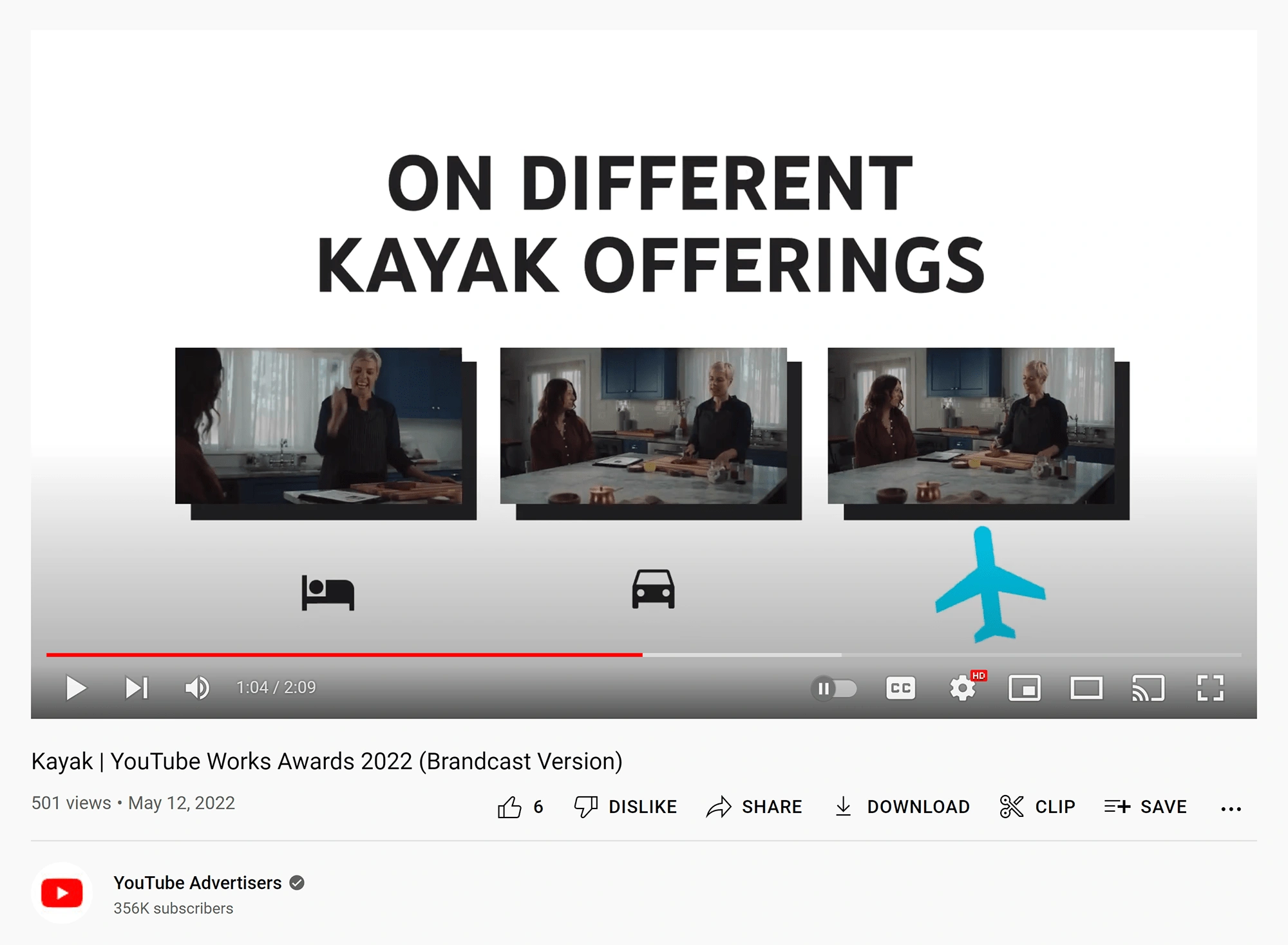
Kayak’s ad campaign took advantage of YouTube’s broad reach in order to target potential travelers in the United States.
The campaign was able to reach 1 in 4 US adults in just one month and conversion rates increased by 7.5%.
10. Data Privacy Concerns Prompt Marketers to Change Strategies
In order for digital marketers to personalize content and target ads at consumers, they need data. But, very soon, that data may be hard to come by.
Consumers are becoming increasingly concerned about privacy.
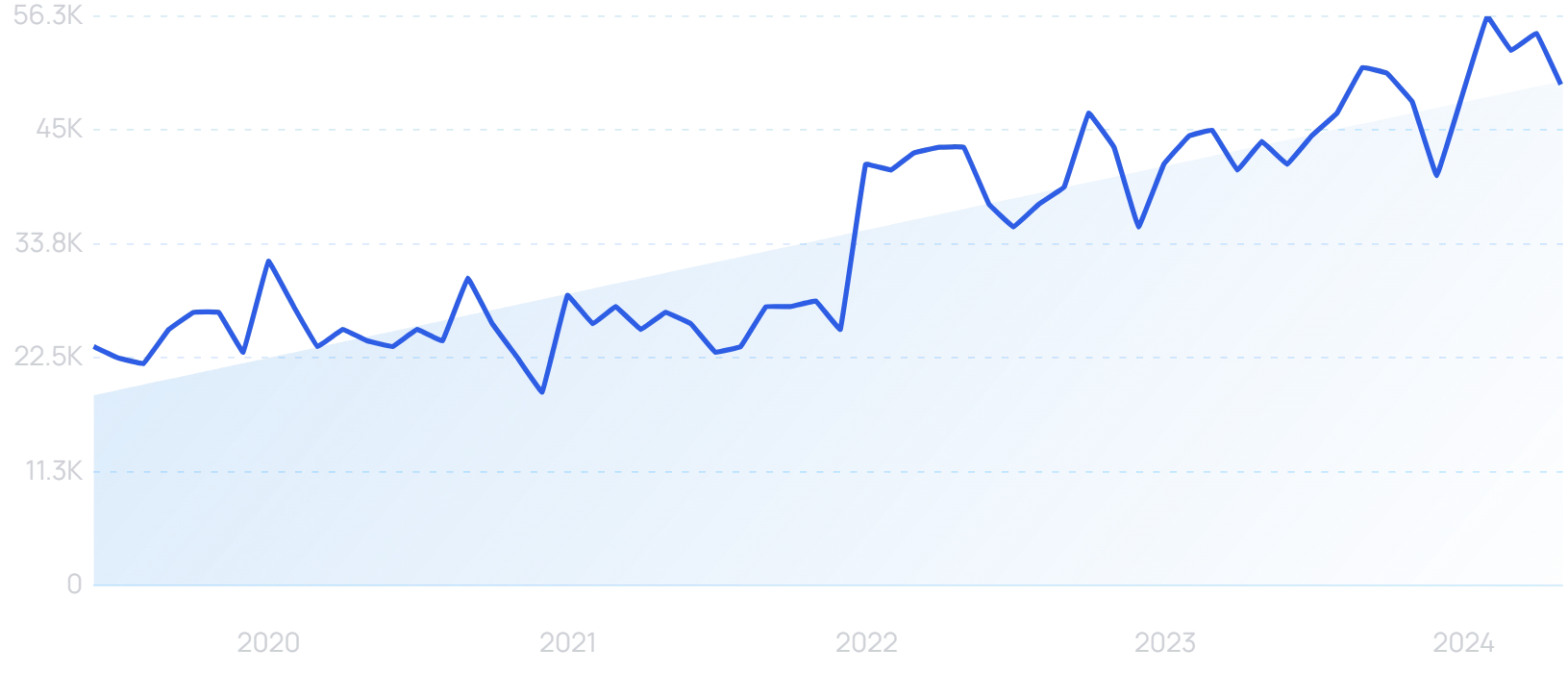
Search volume for “data privacy” have doubled over the past 5 years.
Nearly three-quarters of Americans are “very concerned” or “extremely concerned” about their online privacy and 42% of individuals are not comfortable receiving personalized ads.
The Pew Research Center reports that more than 80% of Americans feel that the risks of companies collecting data on them outweigh the benefits.
A recent Google survey showed that 73% of people use online tools in order to protect their privacy.
Amidst this consumer concern, Apple and Google are phasing out third-party cookies, one of the main ways companies collect data on consumers.
Now, digital marketers are revamping their data collection strategies and aiming to gain back consumer trust.
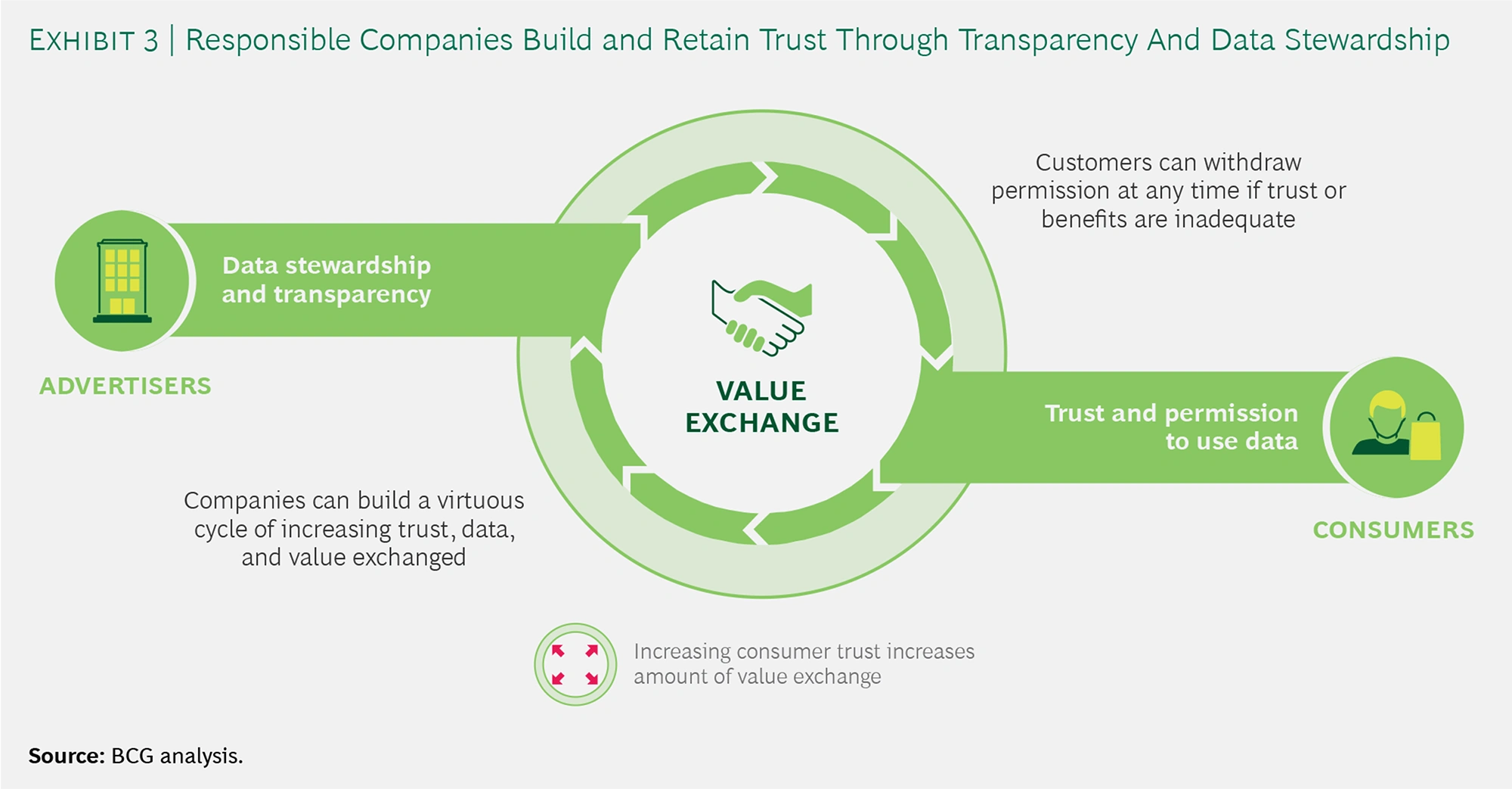
Advertisers who can deliver the transparency consumers demand can expect to see an increase in data willingly exchanged by the customer.
This could negatively impact the bottom line if marketers aren’t able to pivot efficiently.
McKinsey suggests companies that can’t land on an effective data strategy could end up paying as much as 20% more on marketing and sales to generate the same results.
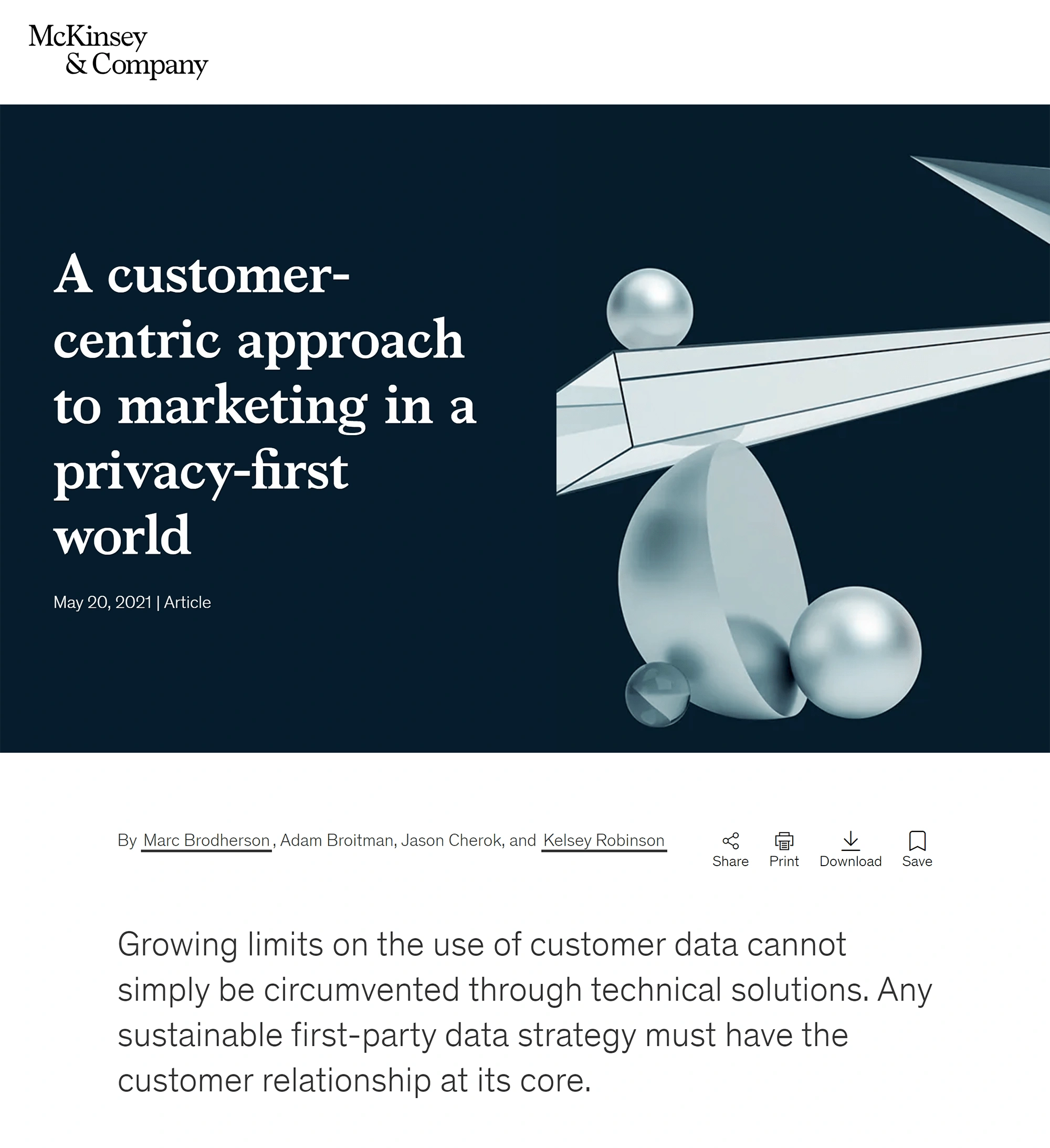
A research report from McKinsey draws the conclusion that “a strong, trust-based relationship with customers may be the key to a sustainable, effective data strategy.”
One alternative for marketers who used to rely on third-party cookies is first-party data. That’s data a company collects directly from its customers.
Search Engine Journal reports that 36% of marketers say data on customer purchase history will be the most valuable first-party data going forward. Other valuable sources of data include social media profiles, website registrations, survey responses, and mobile app usage.
There are clear benefits to first-party data.
It’s cheap to collect. It’s owned by the company. It’s accurate, and it can be used to strengthen relationships with customers.
Collecting and capitalizing on first-party data can help marketers drive business value.
Properly integrated first-party data has been shown to generate double the revenue from a single ad placement or communication. Plus, it can potentially result in a 1.5x improvement in cost efficiency.
11. Metaverse Hypes Dies Down
In simple terms, the metaverse was dubbed to be a game changer for consumers.
(To the point where Facebook’s parent company rebranded to Meta).
It’s a place where people can live a digital life through augmented reality (AR) and virtual reality (VR). Although it’s still in early development, tech experts are conflicted to whether the metaverse will be a place where people play, party, and socialize in the coming years.
So far, reality never really lived up to the hype.

Searches for “metaverse” have steadily declined since peaking in 2022.
In 2023, it was predicted that 110 million people would use AR at least once per month.
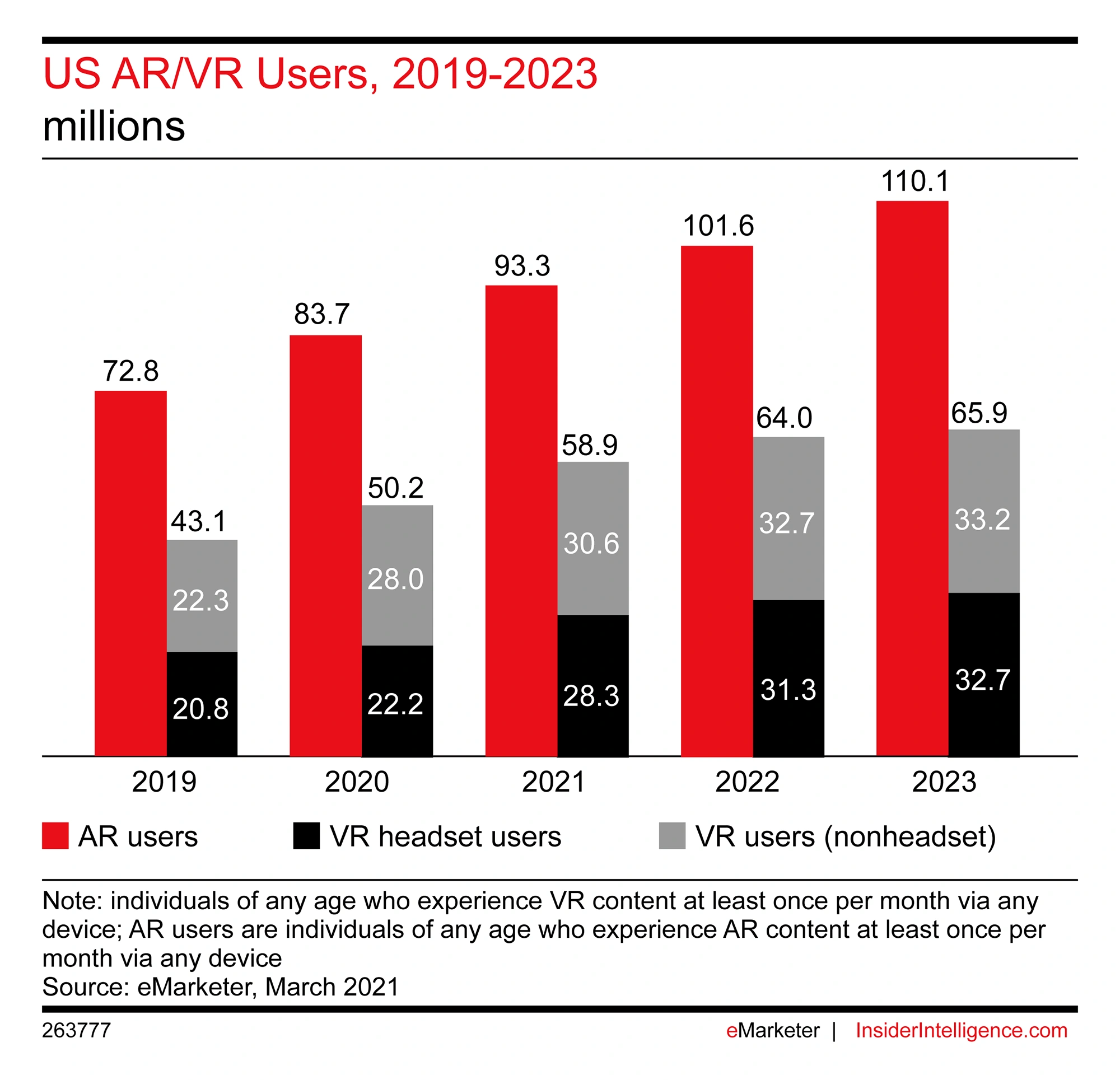
The number of people using was projected to grow. But it’s unclear whether this trend has legs.
But those projections never panned out.
Currently, the metaverse is more of a vague concept than a channel that marketers can target.
However, there are a few examples of metaverse marketing panning out.
For example, Gucci.
The fashion retailer launched a limited-time-only Gucci Gardens in Roblox, a metaverse version of the brand’s real-life Gucci Garden Archetypes in Italy.
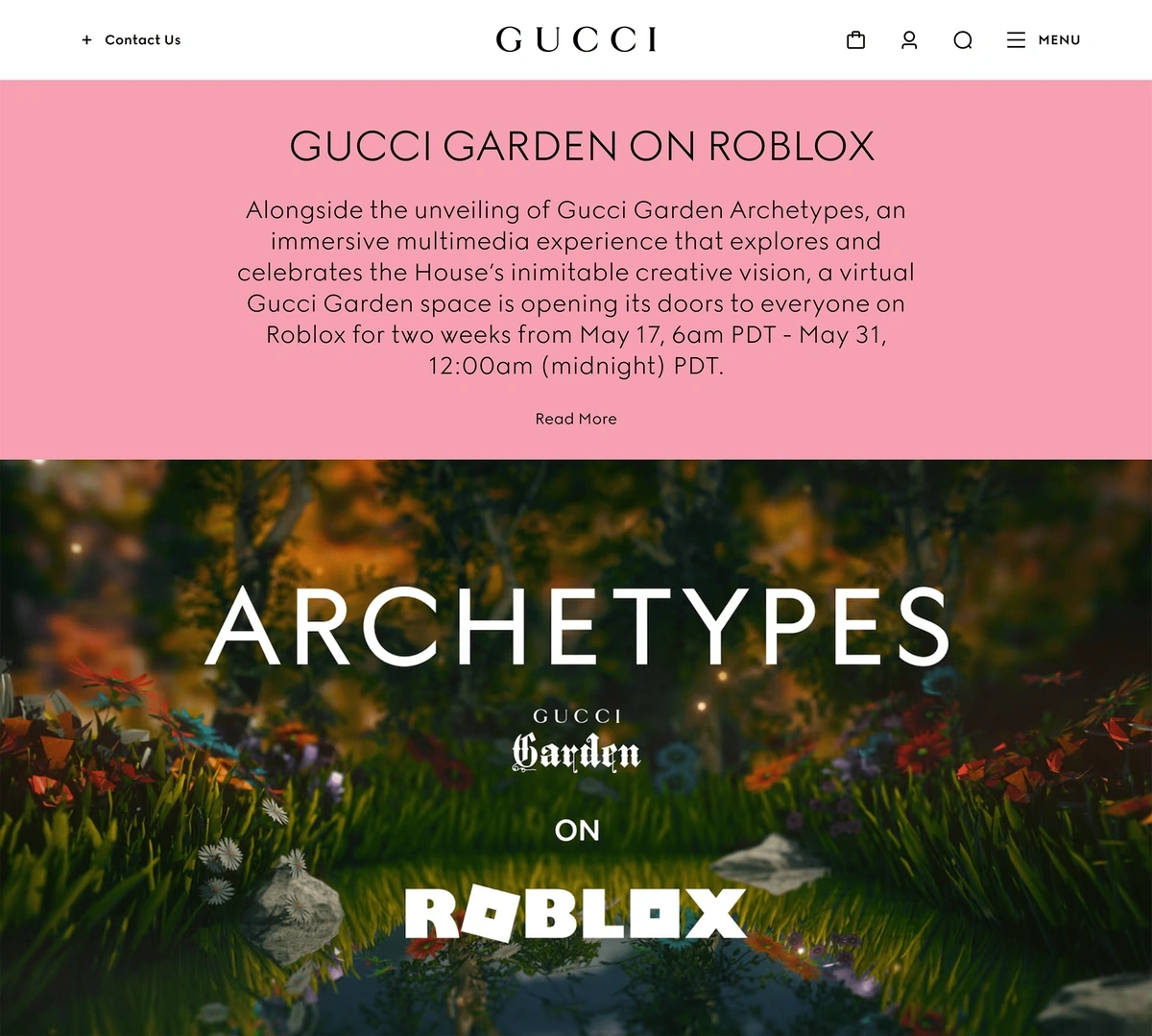
In Gucci Gardens, people could mingle with other avatars, explore the space, and purchase digital products.
More than 19 million people visited the space.
Once there, they could purchase Gucci accessories that ranged in price from $1.20 to $9. More than 4.5 million items were sold.
The mega hit video game Fortnite has seen millions of people show up for virtual events (drawing over 12 million people).
12. Marketing Leaders Respond to Calls for Increased Diversity
Digital marketers are listening as consumers call for more diversity, equality, and inclusion.
A survey from Abode found that 61% of US consumers say diversity in advertising is important.
In fact, Adobe reported that more than one-third of LGBTQ+, African-American, and Millennial consumers said that a brand’s efforts to show diversity has a major impact on their likelihood to purchase products or services from that brand.
Another study found that brands with the highest diversity scores have an 83% higher consumer preference.
In one study of Gen Z consumers, 70% of individuals reported being more trusting of brands that represent diversity in their marketing.
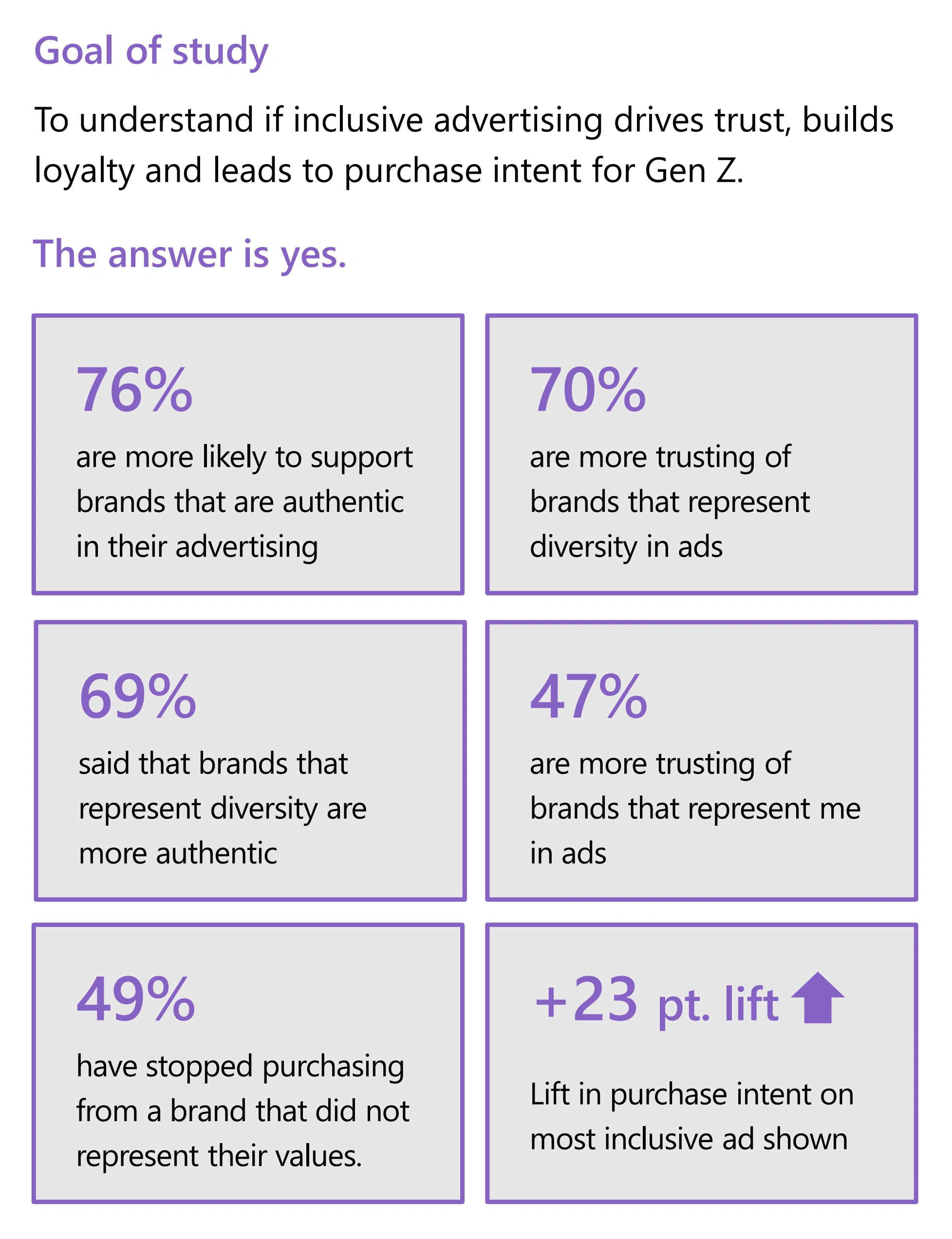
Inclusive advertising and marketing is especially important to Gen Z.
But, only 29% of non-white individuals believe their race is accurately represented in advertising.
Most consumers especially see digital marketing efforts as lacking diversity.
When asked about which media portrays the most diversity in advertising, 43% of consumers said network TV. Only 20% said social media and only 9% said digital ads.
Leading digital marketers are taking steps to ensure their brands meet diversity and inclusion goals.
The vast majority believe that inclusivity in marketing is important: 93% agreed with this statement in a recent survey.
Nearly 90% of marketers agree that there’s room for growth when it comes to using diverse images in marketing campaigns.
Thoroughly researching the target audience, using inclusive language, and featuring diverse imagery are a few ways digital marketers are adjusting their strategies. Many brands are also partnering with minority-owned businesses in order to make their marketing more inclusive.
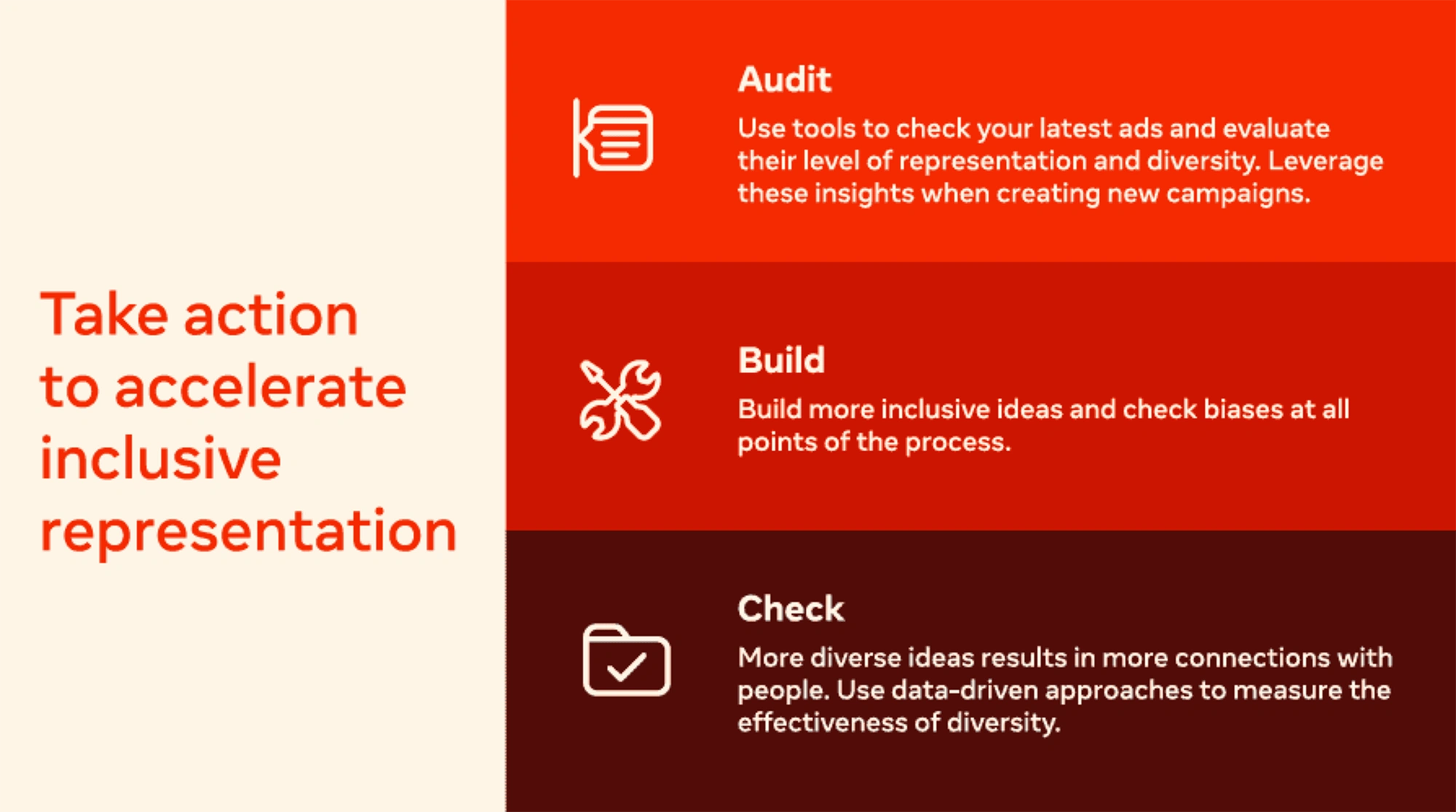
Digital marketers are looking at a pathway like this one as they work toward inclusive representation.
Procter & Gamble provides one example of a successful initiative aimed at diversity in marketing.
The corporation’s “Widen the Screen” video series aims to expand and elevate Black voices. The initiative has created partnerships with Black creators in film, television, and advertising with the goal of confronting prejudice.
Oreo is another brand that’s been committed to LGBTQ+ inclusion for the past several years.
They partnered with PFLAG, an organization dedicated to advocating for LGBTQ+ rights, to launch the #proudparent campaign.
They utilized filters on Instagram, Twitter ads, and a dedicated website in their marketing.
The campaign was a huge success, especially on social media. It produced 315 million impressions and 2 million engagements.
13. Chatbot App Integrations Grow
One digital marketing strategy that combines a few of the trends already on this list is the use of chatbots.
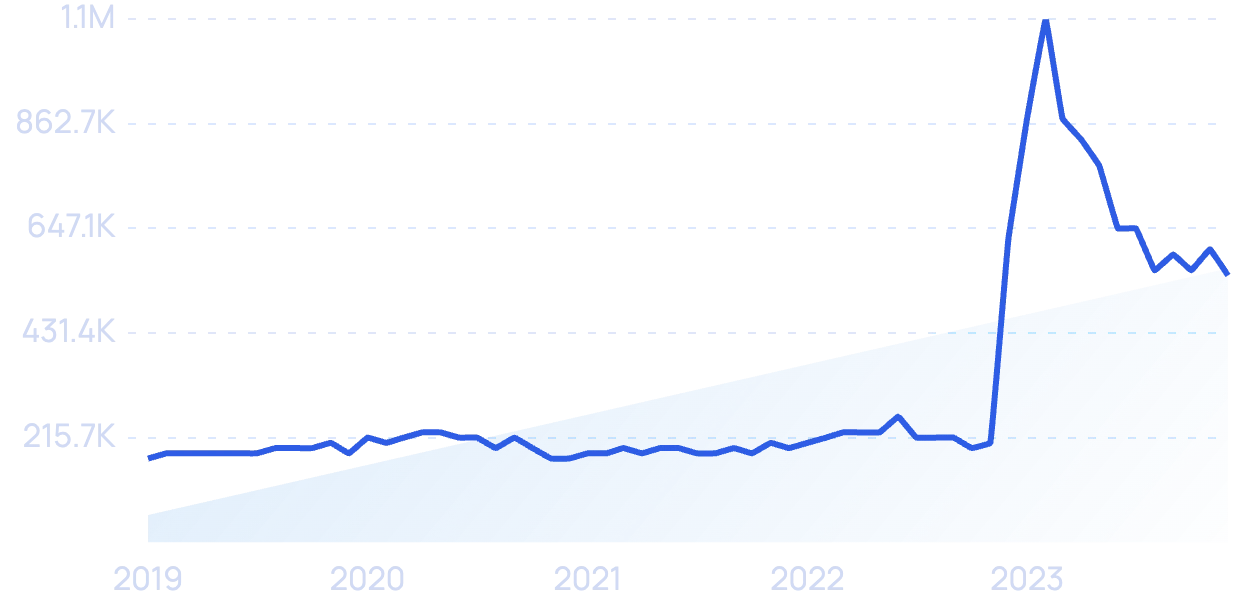
Search volume for “chatbot” is growing, up 219% in the past 5 years.
AI-powered chatbots combine the personalization consumers crave with the technology of the future.
A survey of US adults found that 40% of US consumers are interested in using chatbots. It also reported that 80% of consumers who have interacted with a chatbot had a positive experience.
Digital marketers are using chatbots in a variety of ways: driving people through the sales pipeline, answering questions, and pointing consumers to specific products.
In one survey of B2B marketers, 82% say AI chatbots are a very valuable asset in their current sales and marketing strategy.
Chatbots can be a helpful tool for building trust with consumers, too.
Facebook reports that 69% of Americans who have messaged a business say that messaging capability makes them feel more confident about the brand.
Insider Intelligence expects this technology to be incredibly valuable in the future.
By 2024, they say customer retail spending via chatbots will hit $142 billion. That’s compared to just $2.8 billion in 2019.
WhatsApp, a platform that boasts 2 million global users, is one of the most popular ways in which businesses deploy chatbots to achieve their marketing goals.
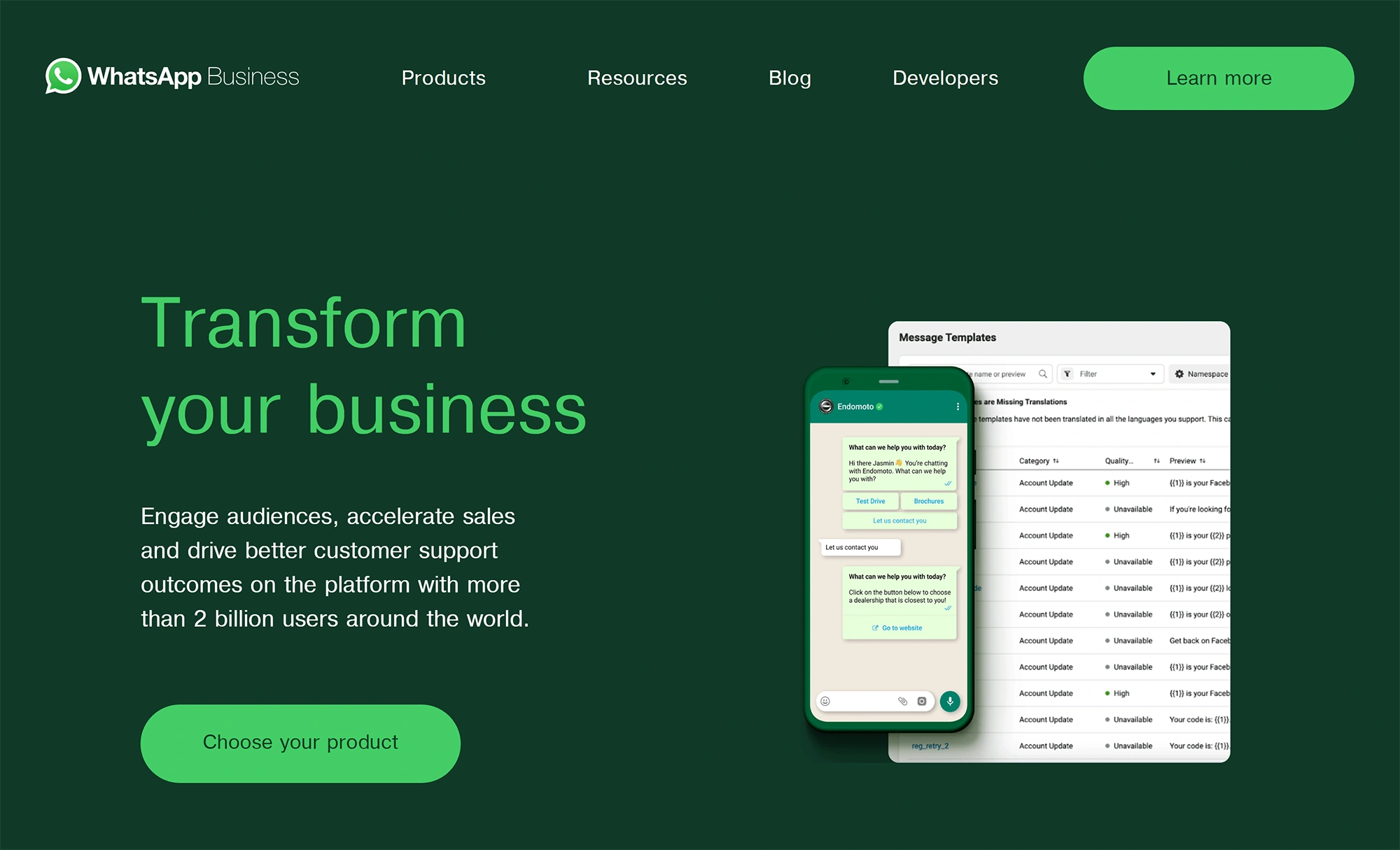
With WhatsApp, businesses can meet customers where they are and build long-lasting customer relationships.
Marketers can use the app platform to share reminders with customers, take advantage of cross-selling opportunities, and deliver hyper-relevant promotions.
Tata Cliq, a luxury ecommerce brand based in India, launched a chatbot marketing and sales campaign through WhatsApp in October 2021.
They achieved a 57% clickthrough rate in their WhatsApp communications and attributed $500k in sales to the app during one month. Their ROI was 10x higher than with conventional marketing channels.
Facebook Messenger remains one of the top platforms for chatbots.
There are more than 300k active chatbots on Messenger and more than 8 billion messages go between businesses and consumers each month.
Sharkey’s Cuts For Kids, a franchised kids’ hair salon in Odessa, TX, used a Facebook Messenger chatbot to drive excitement for its grand opening.
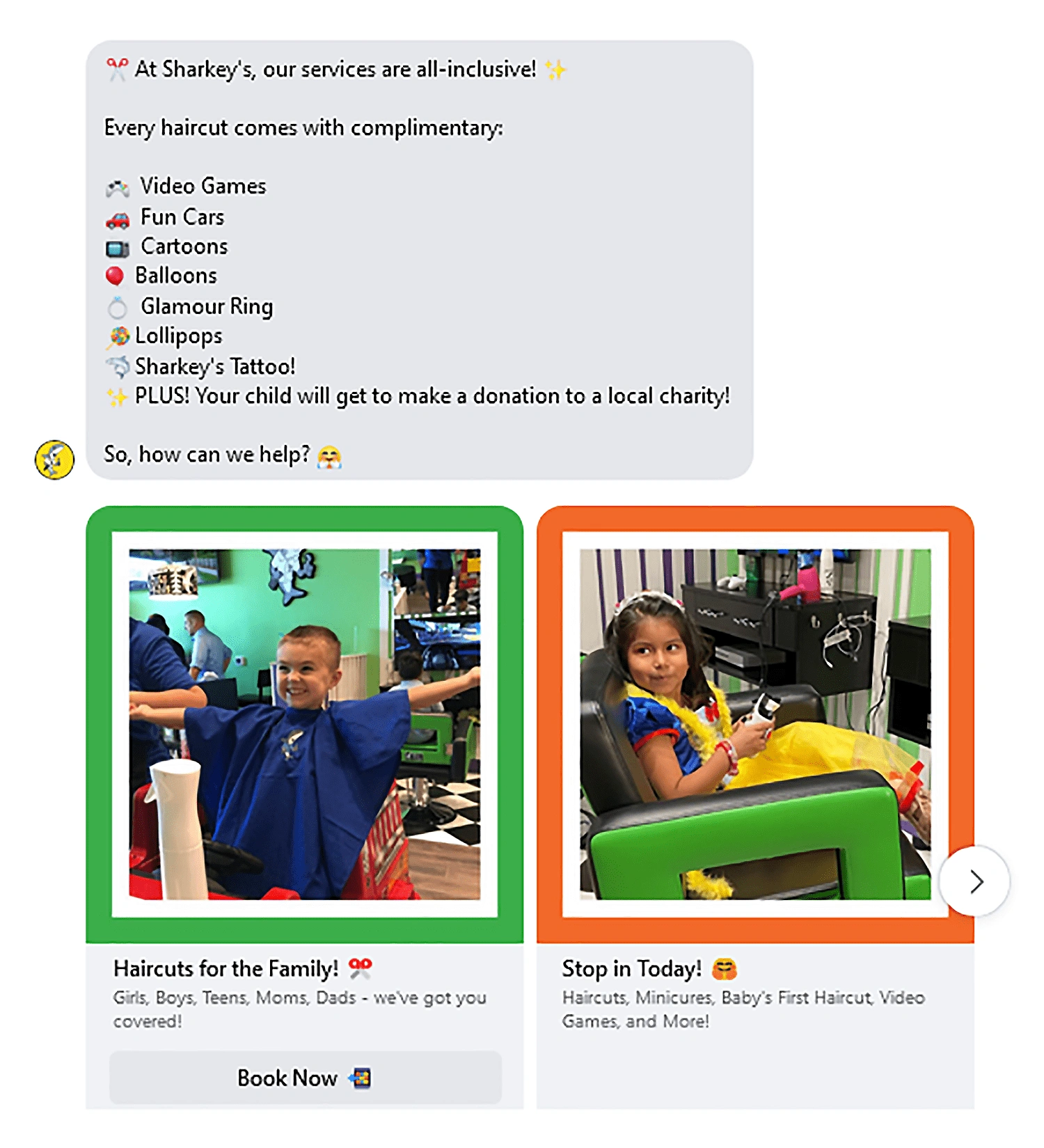
Using chatbots on Facebook Messenger can drive leads and conversions for local businesses.
Facebook users messaged Sharkey’s in order to enter a giveaway and provided their information to the chatbot. In return, they received a voucher for the grand opening. The chatbot was also able to prompt users to make an appointment and sign up for reminders.
Sharkey’s generated more than 100 appointments for opening day and reduced their cost-per-acquisition by 58% when compared to other franchise grand openings.
Conclusion
That wraps up the top trends driving marketing in 2024 and beyond.
Social media platforms continue to roll out features for businesses, but consumers are demanding more authenticity and personalization from businesses.
Brands that can find the right balance between paid marketing and digital word-of-mouth directly from their customers are poised to be the most successful in the coming years.

